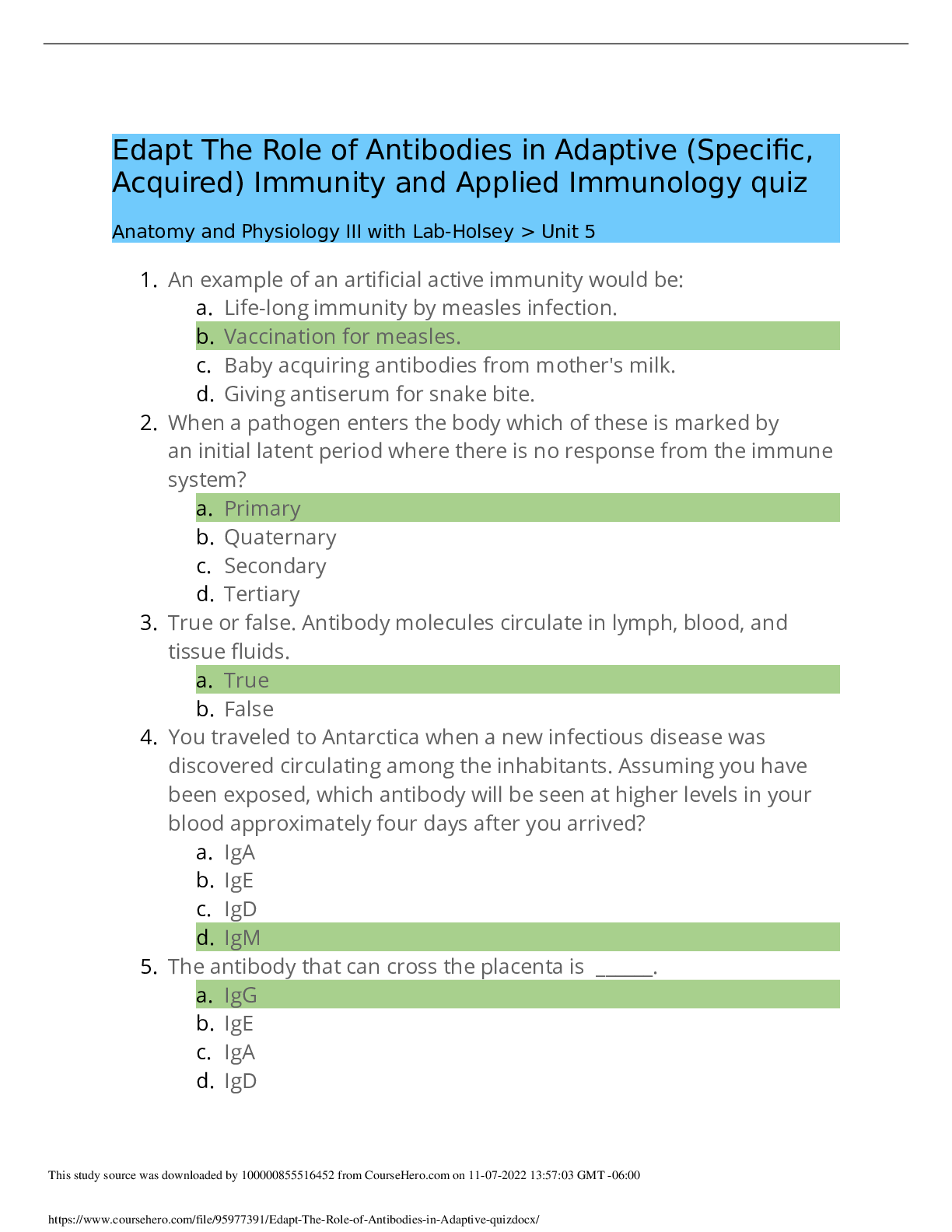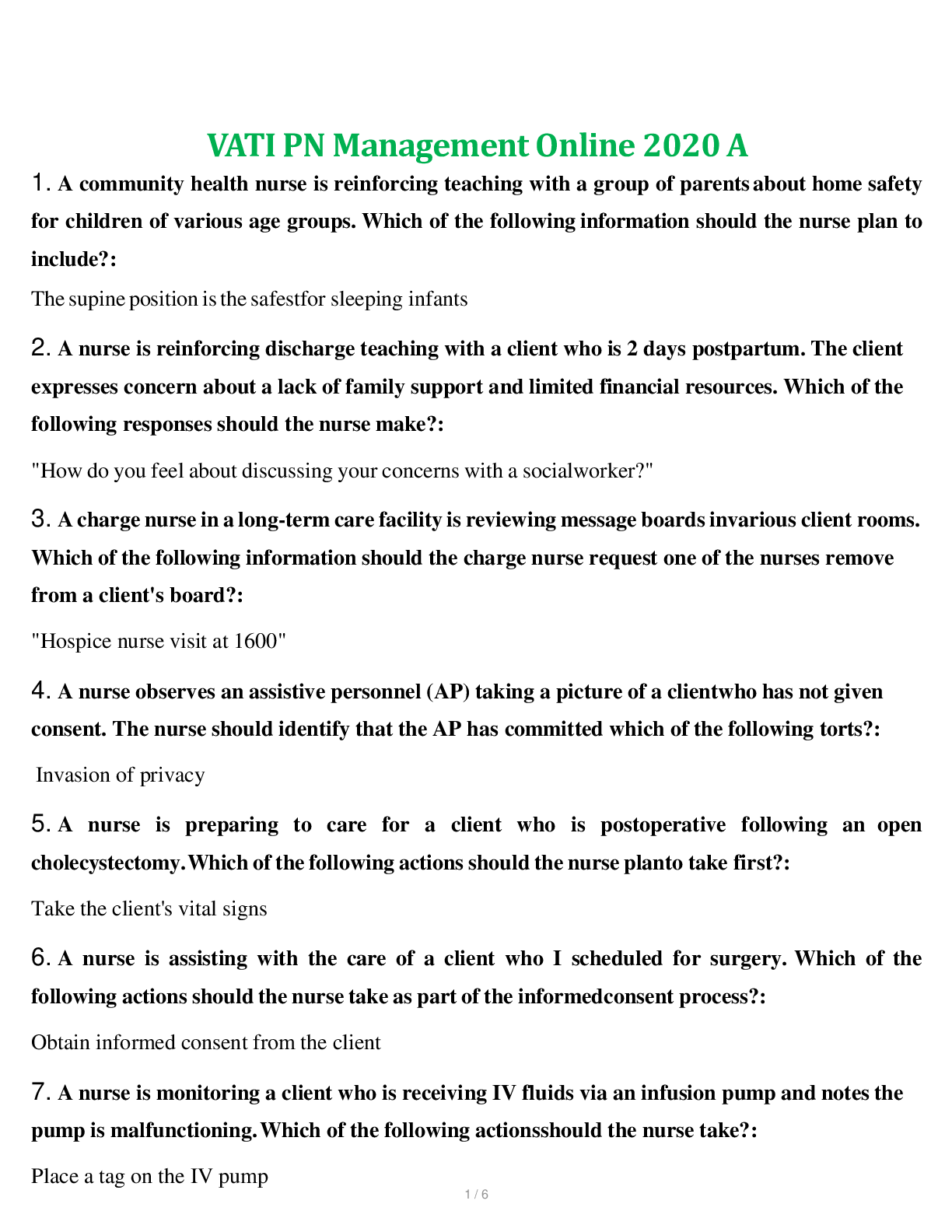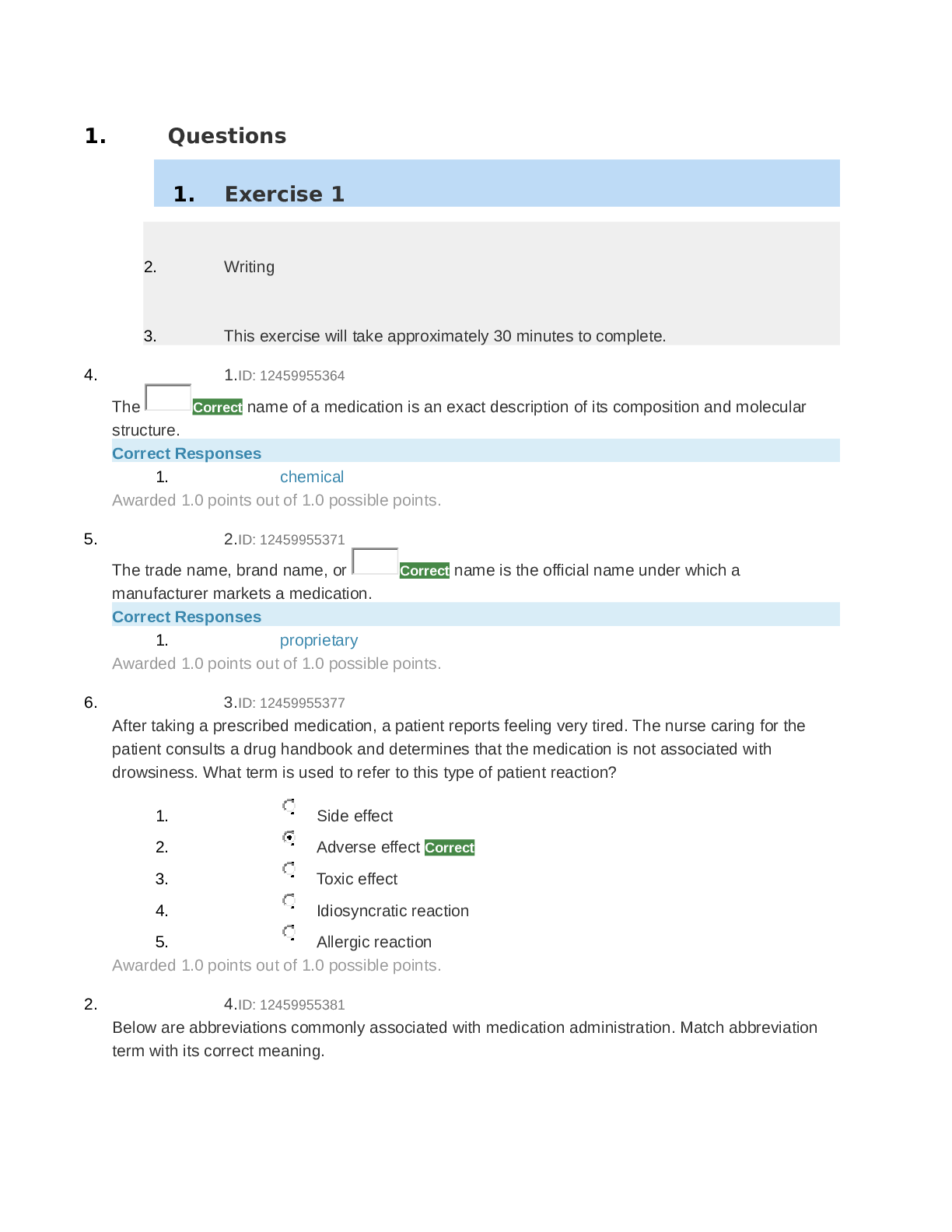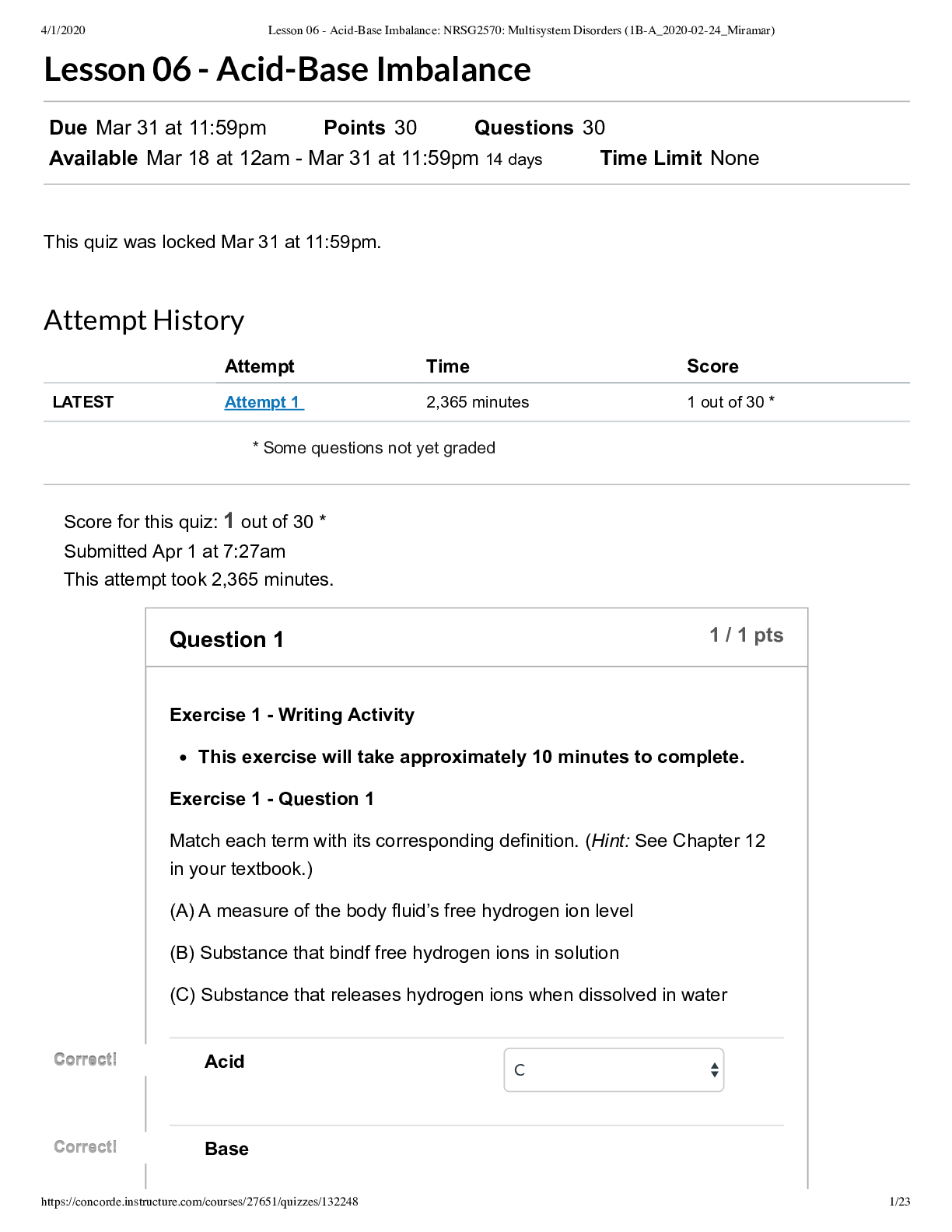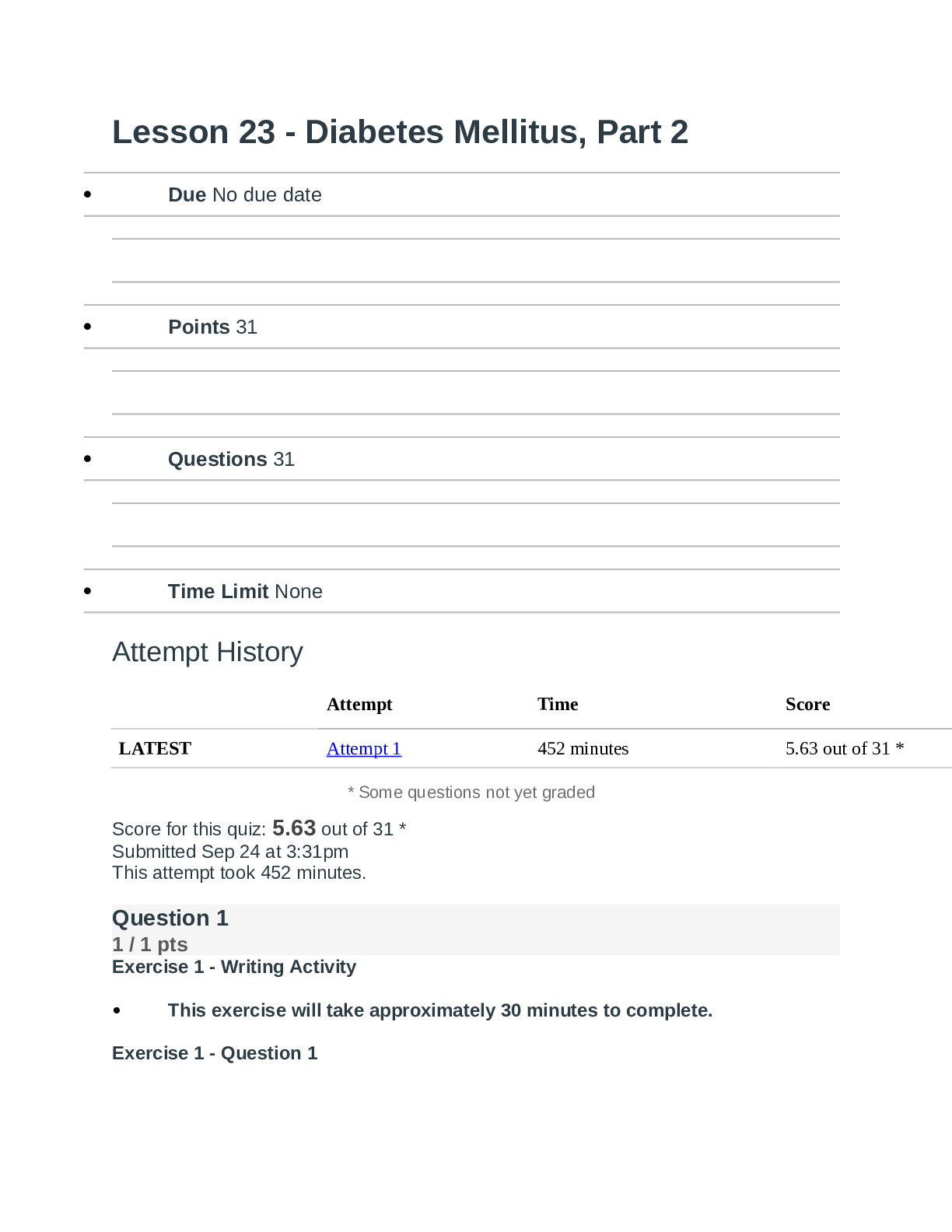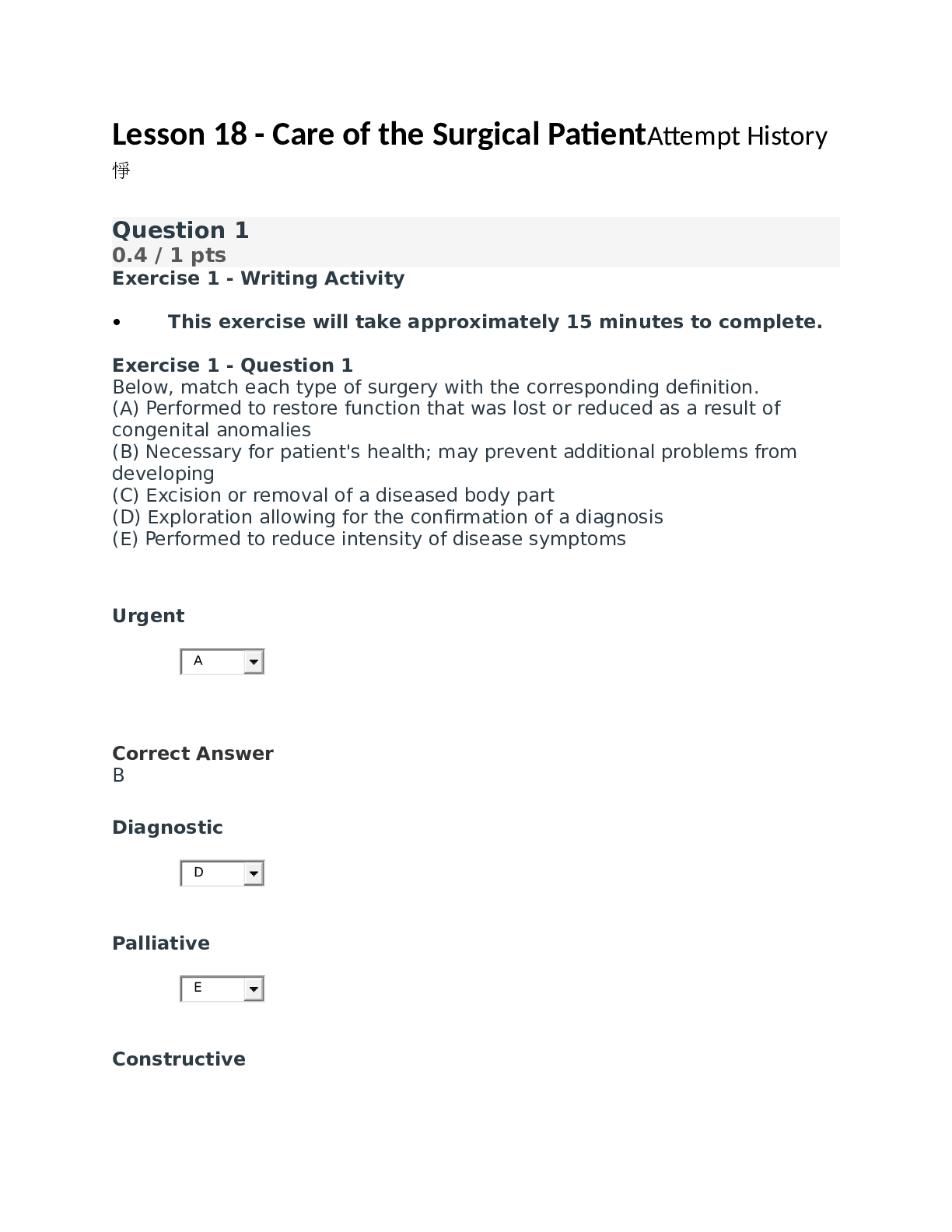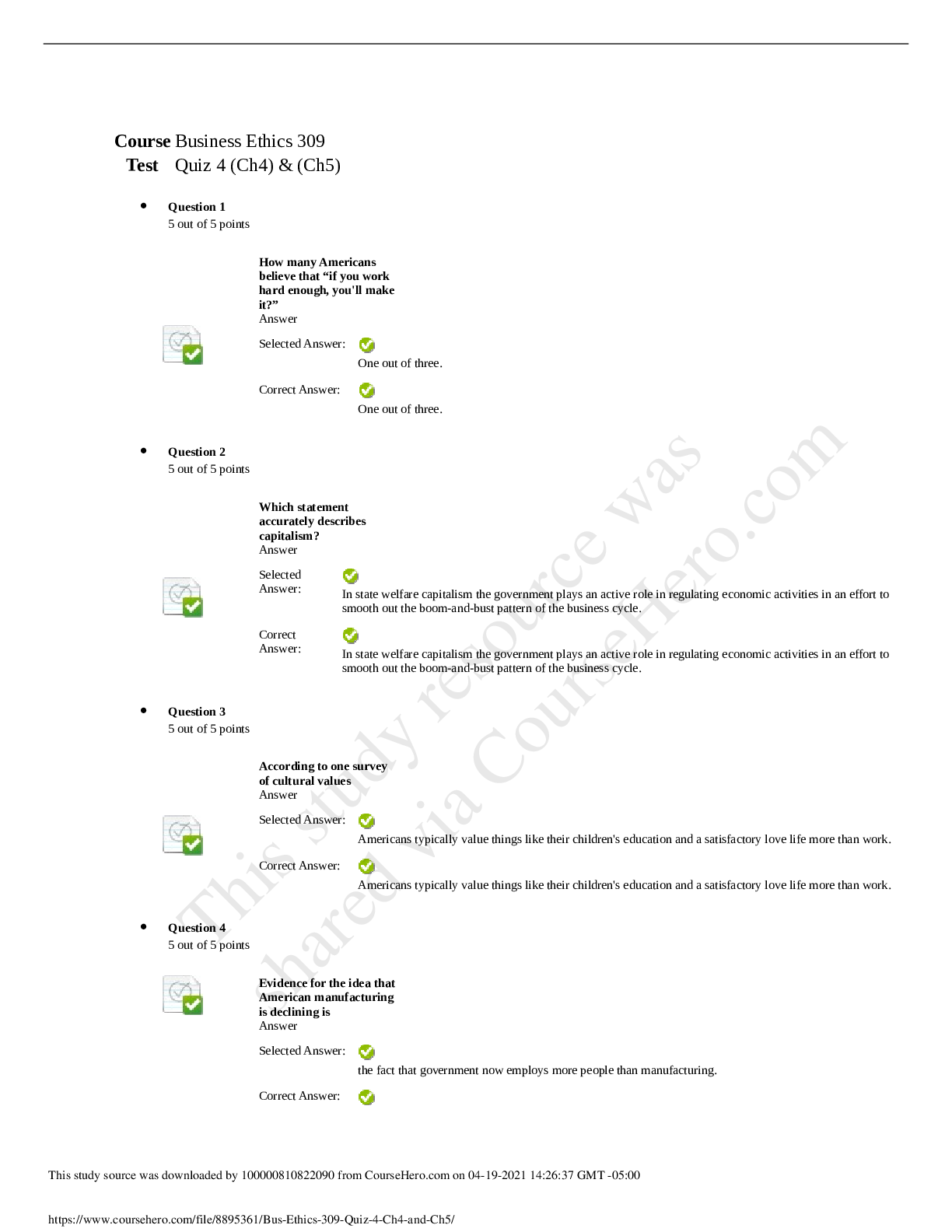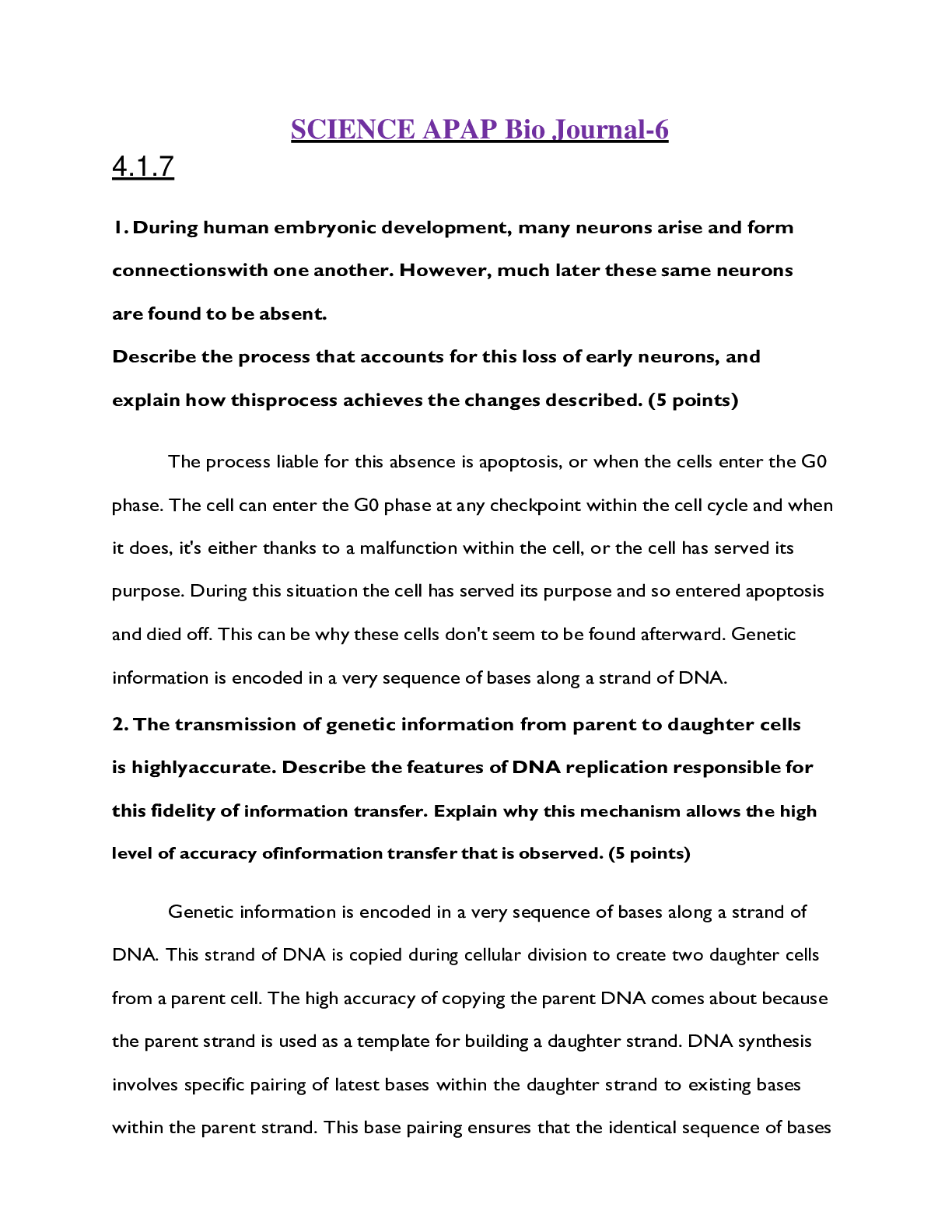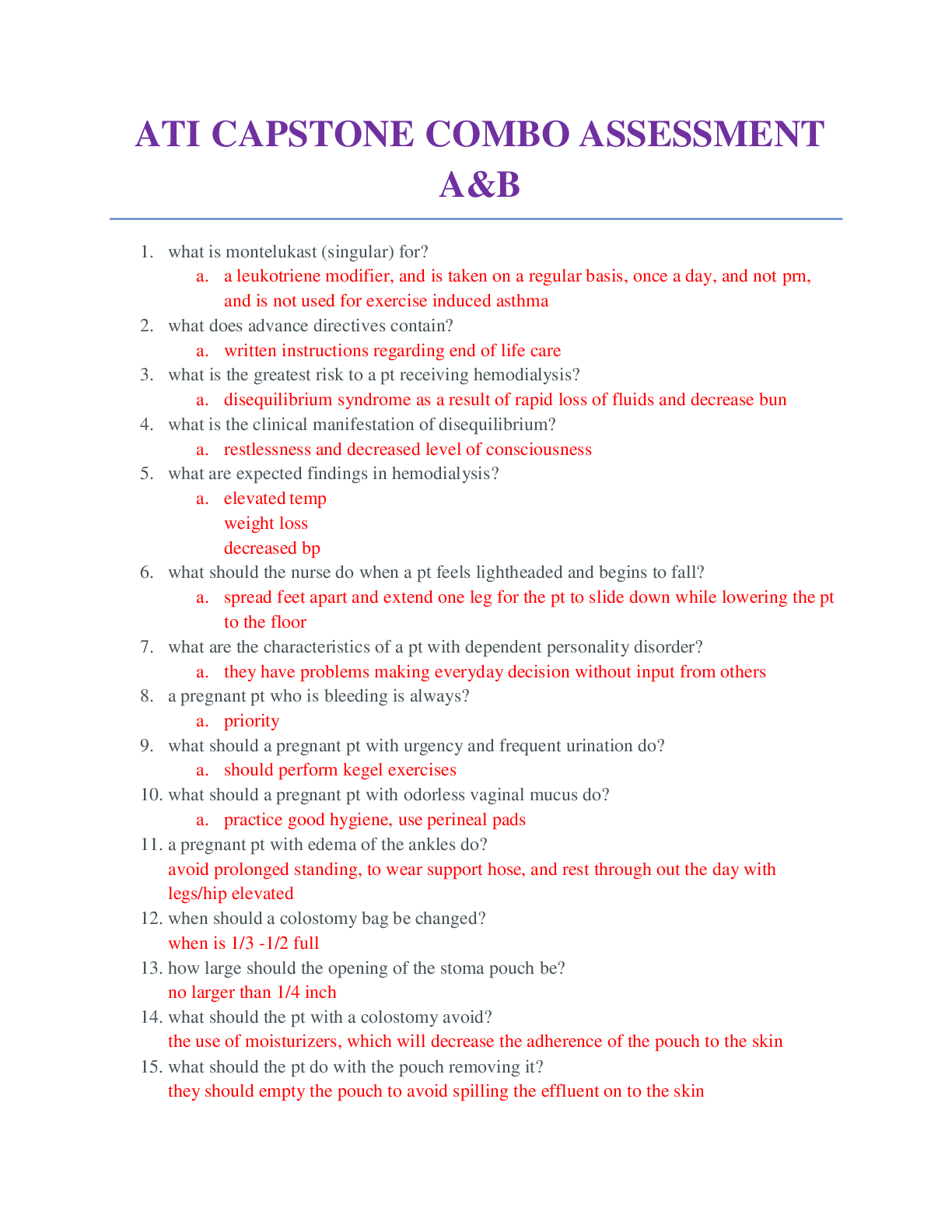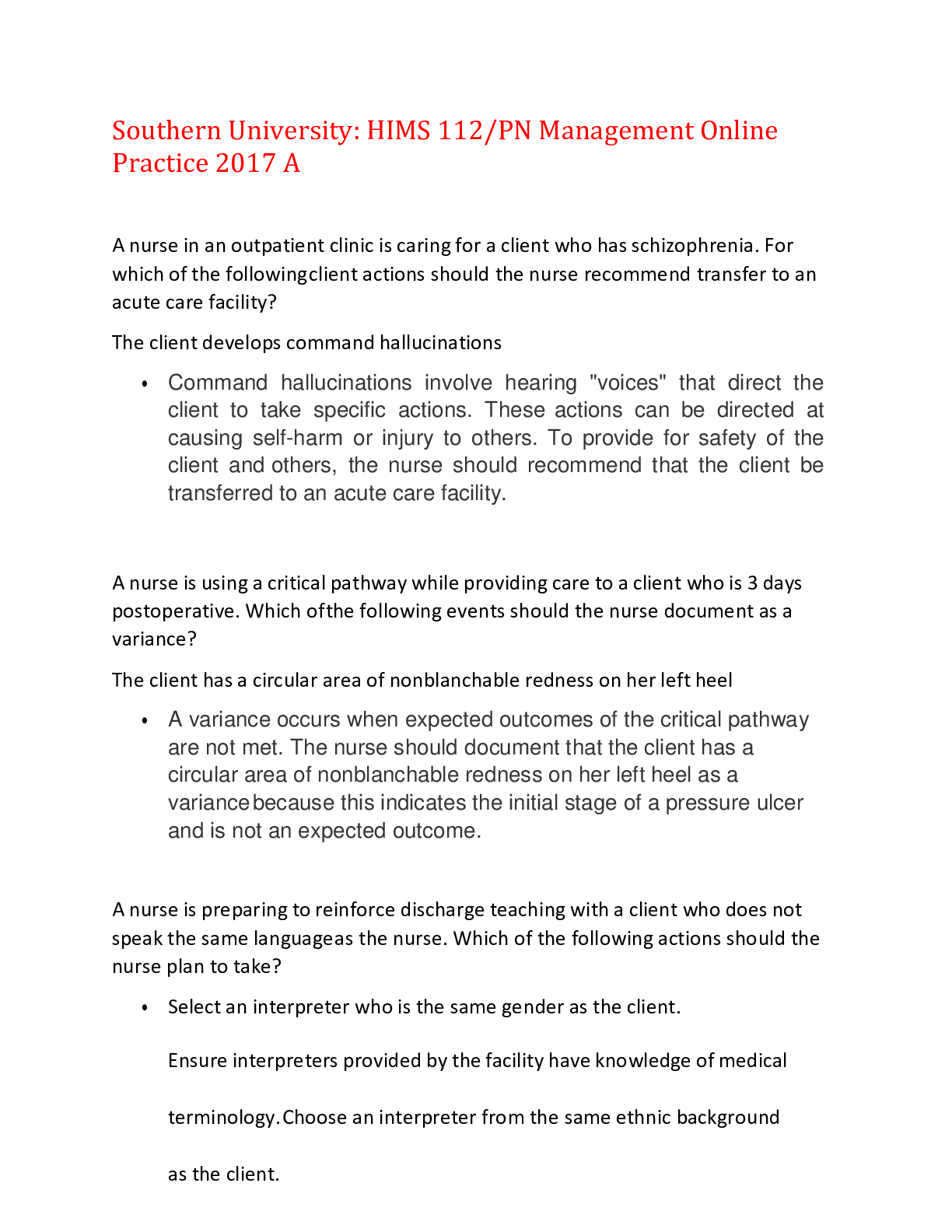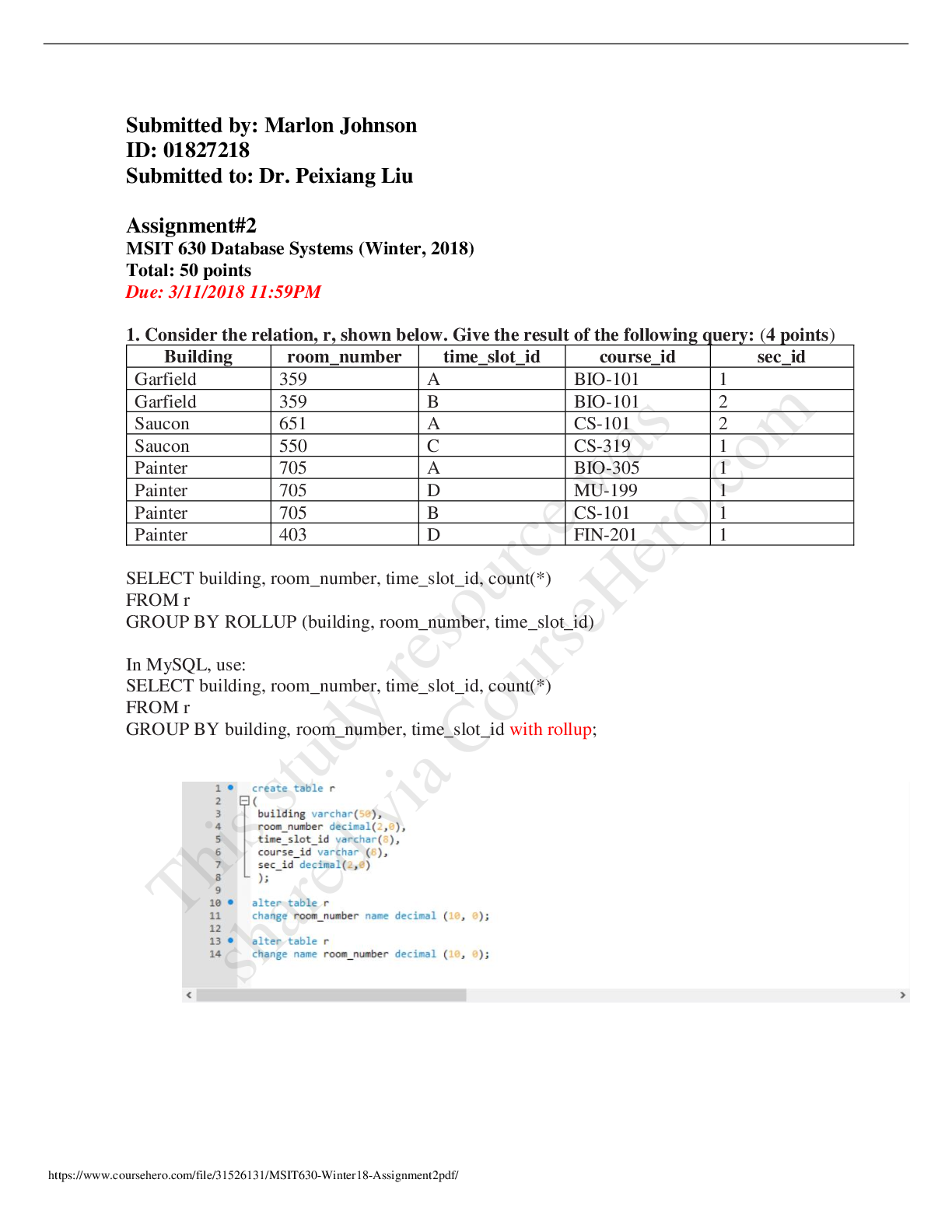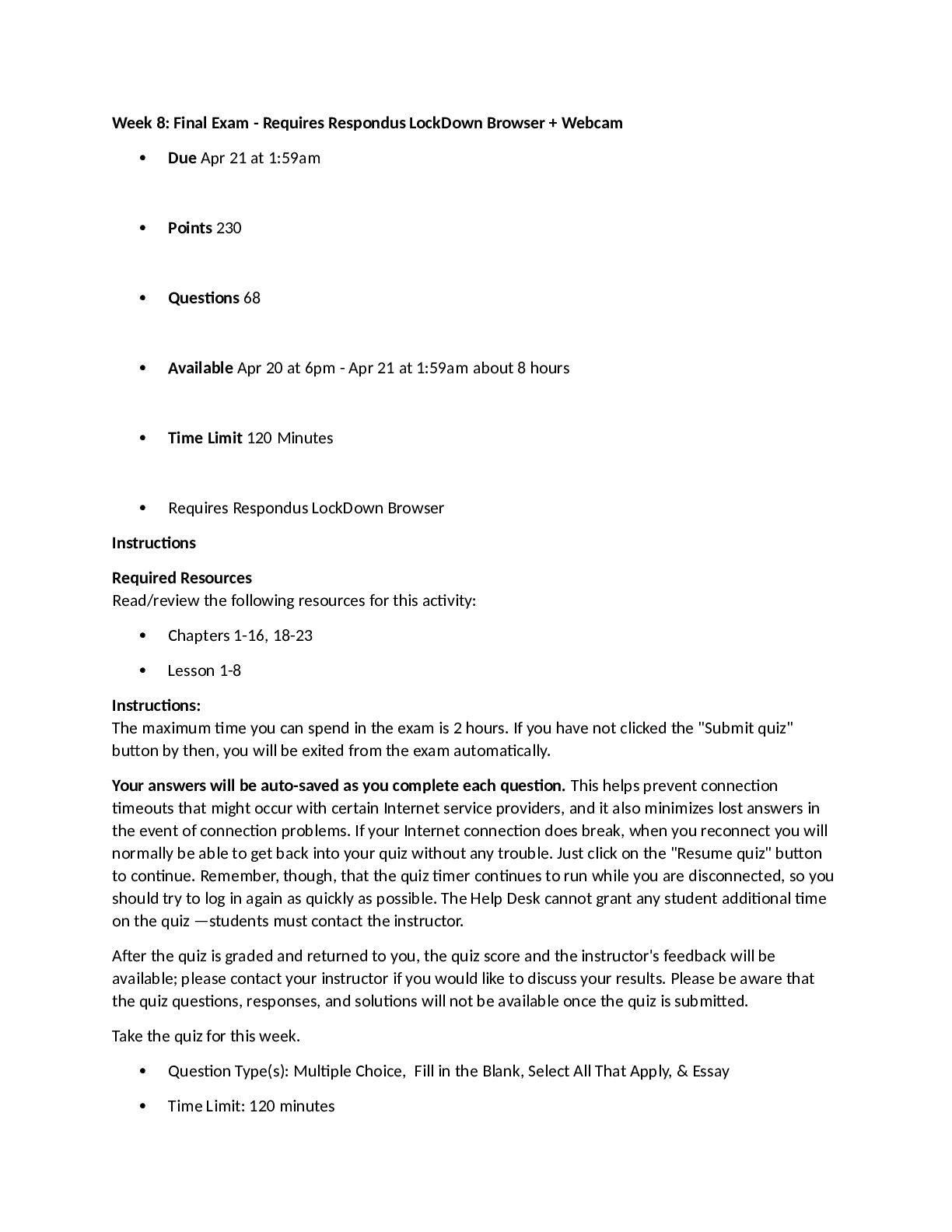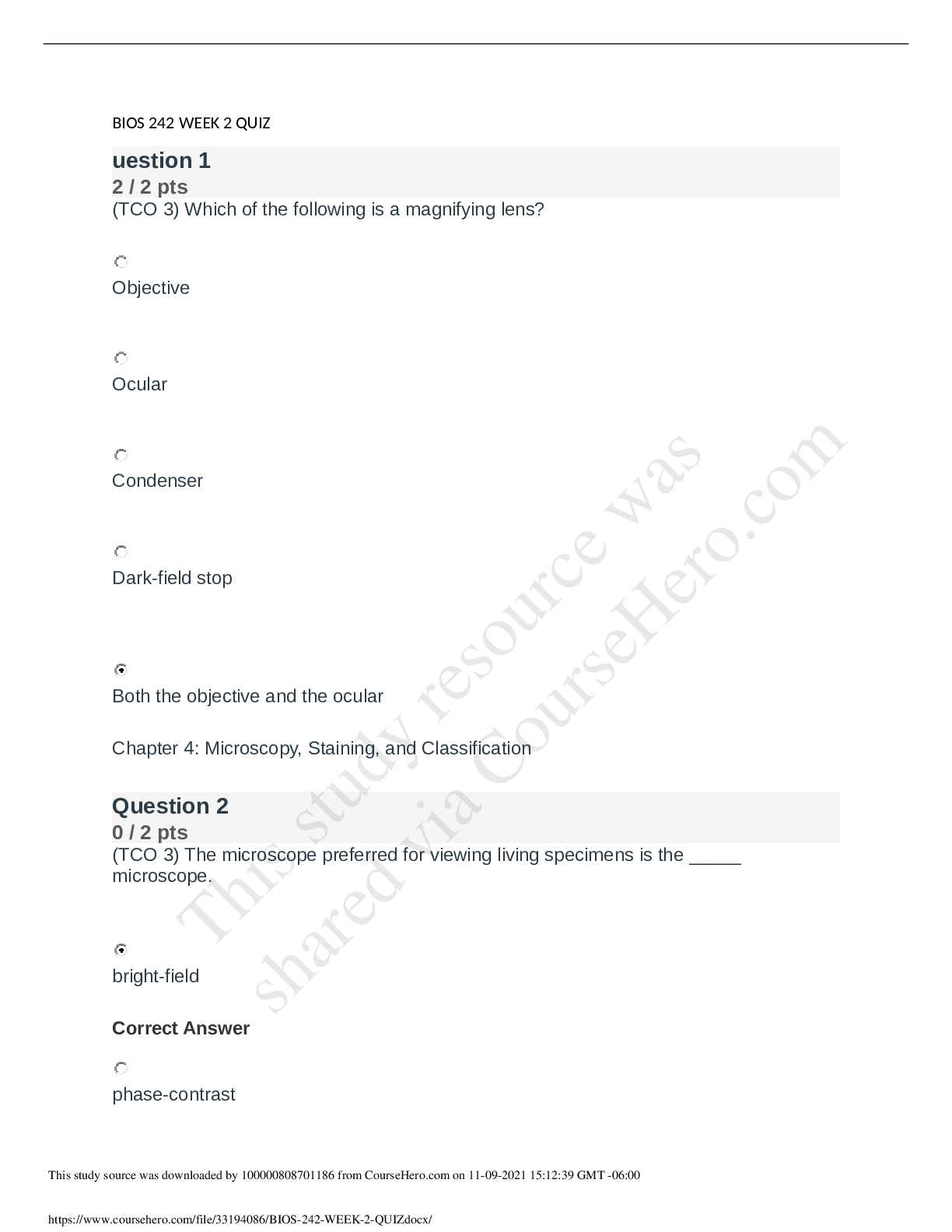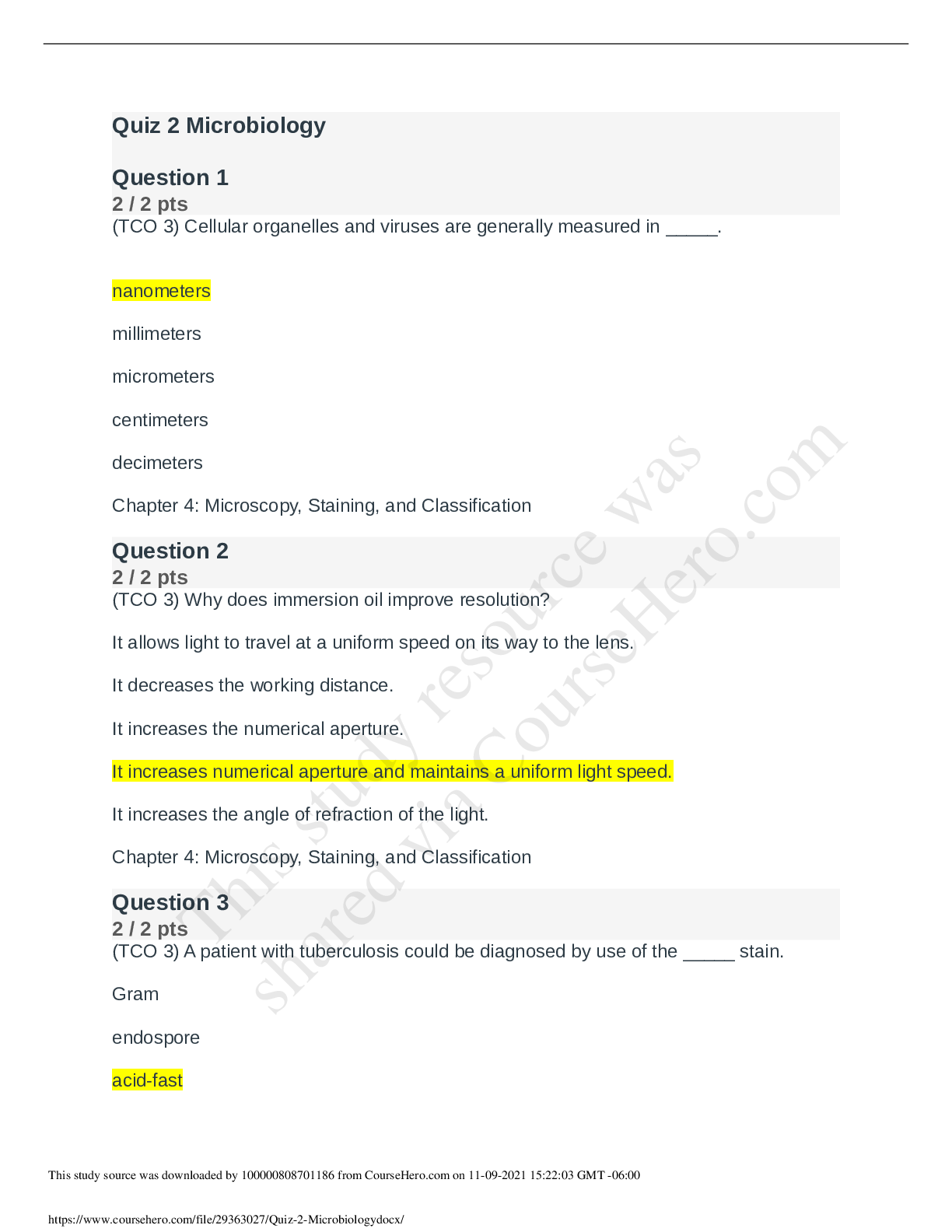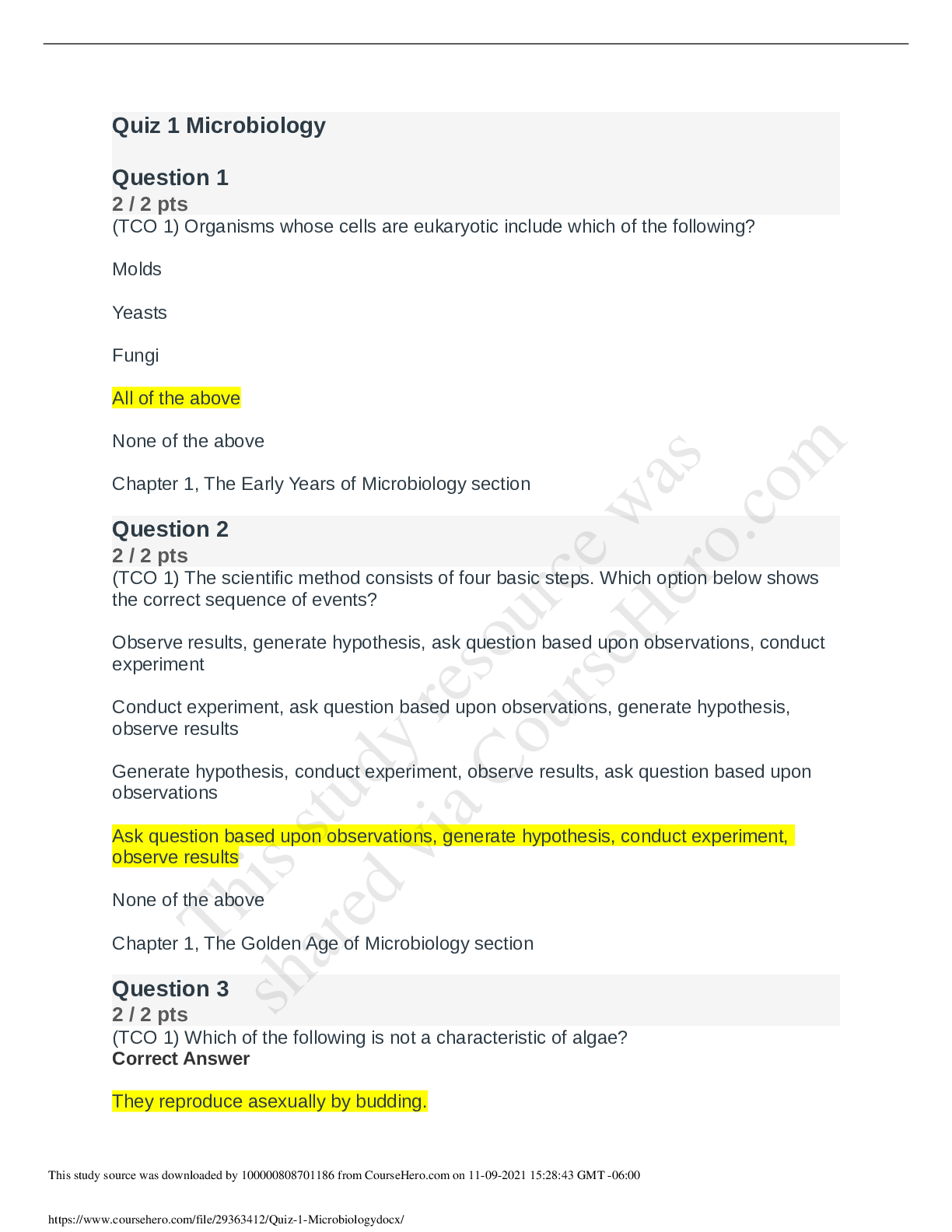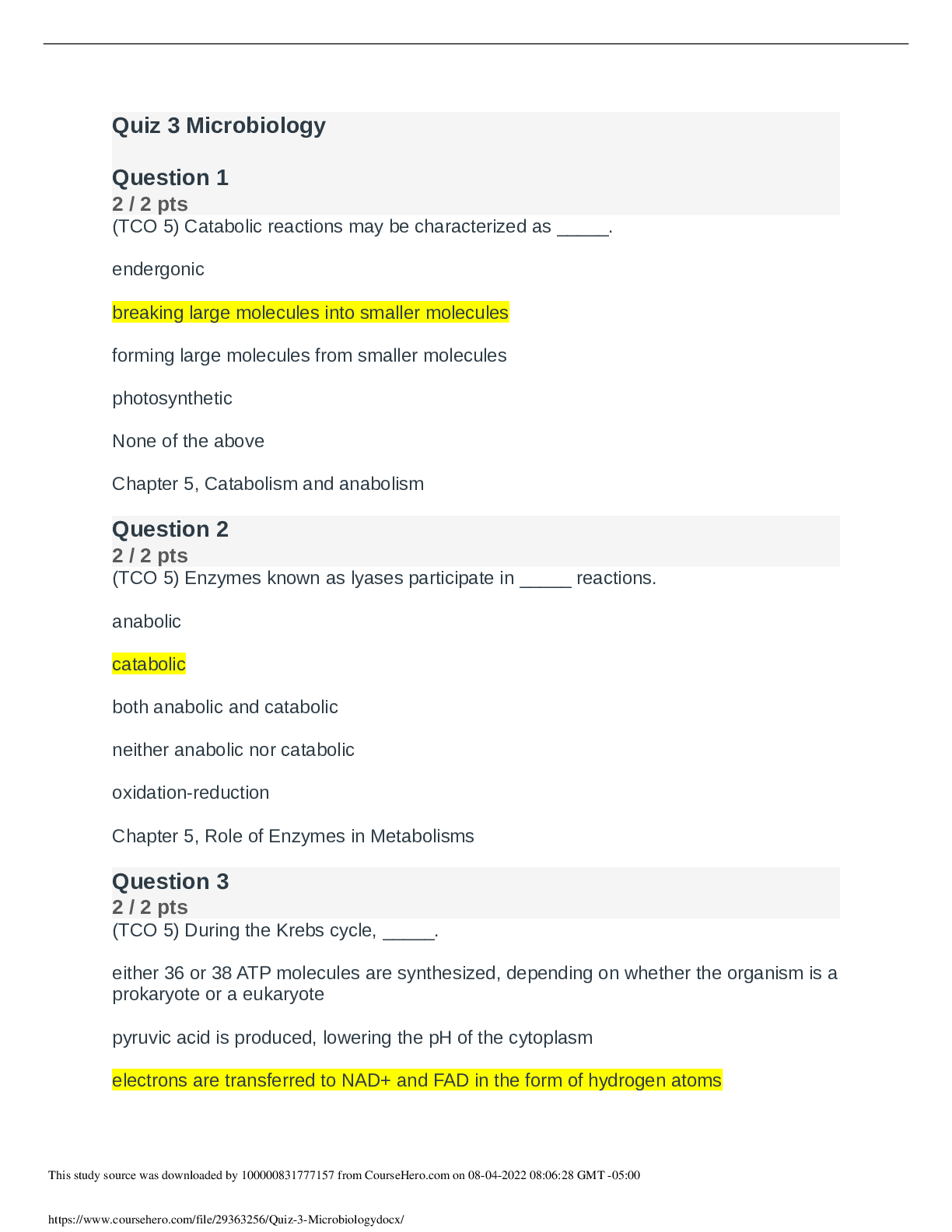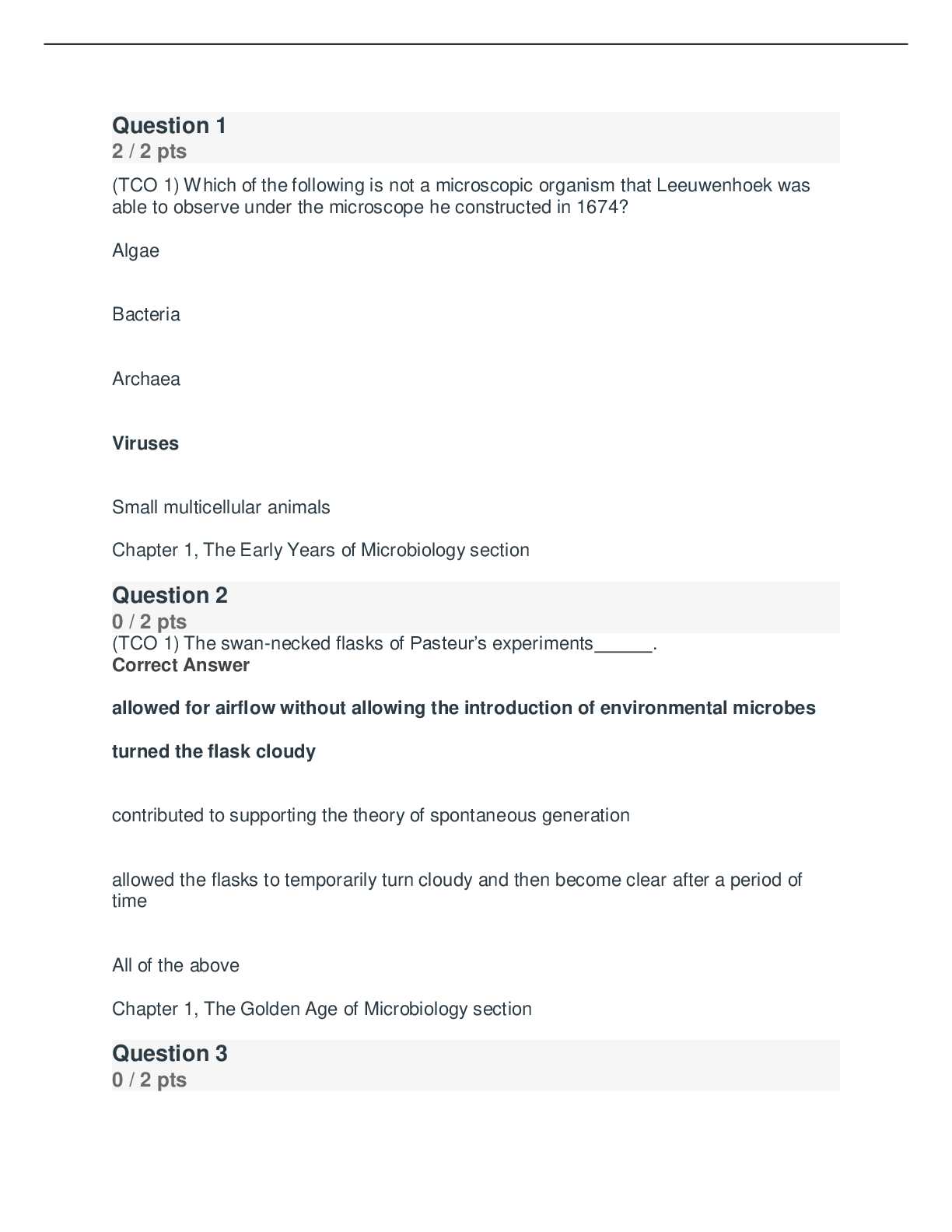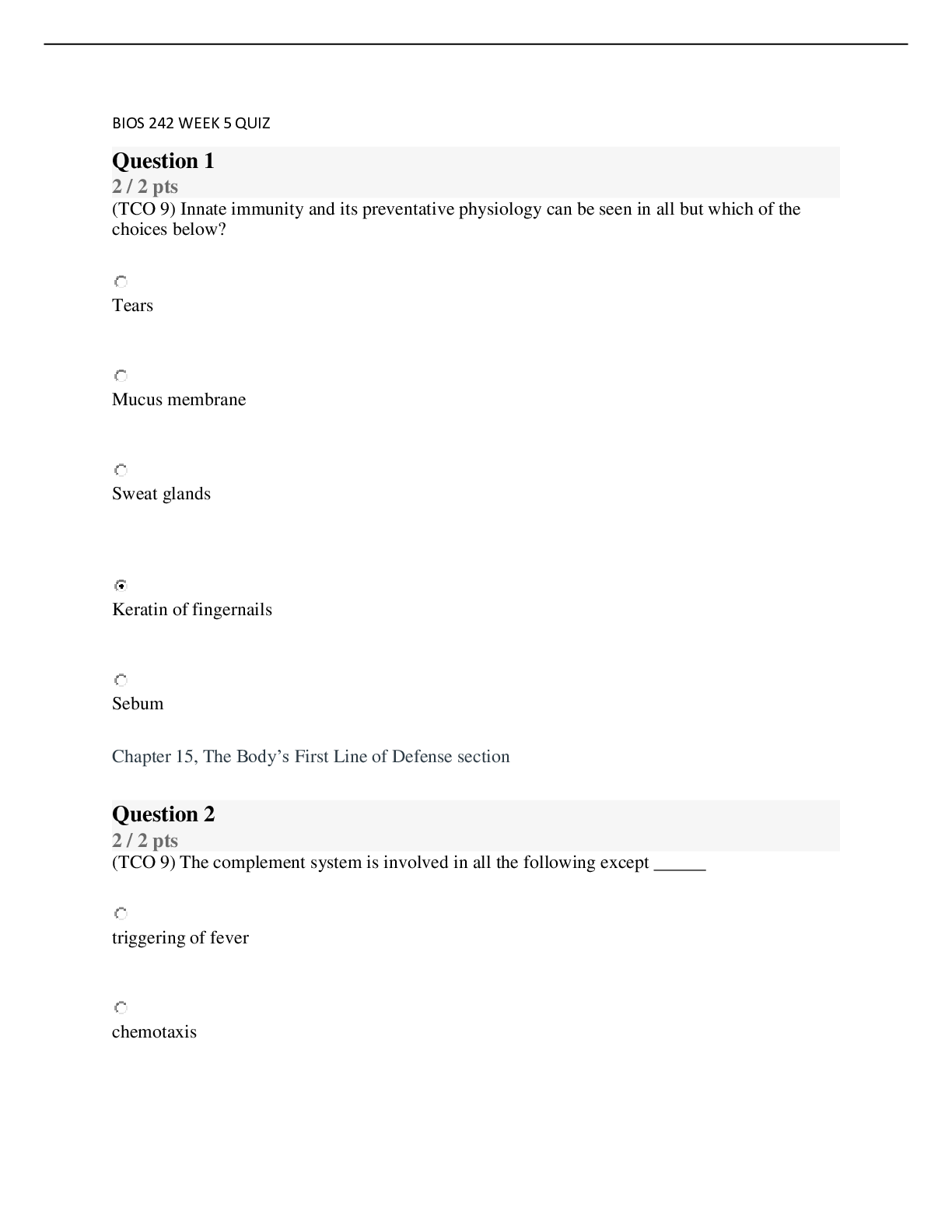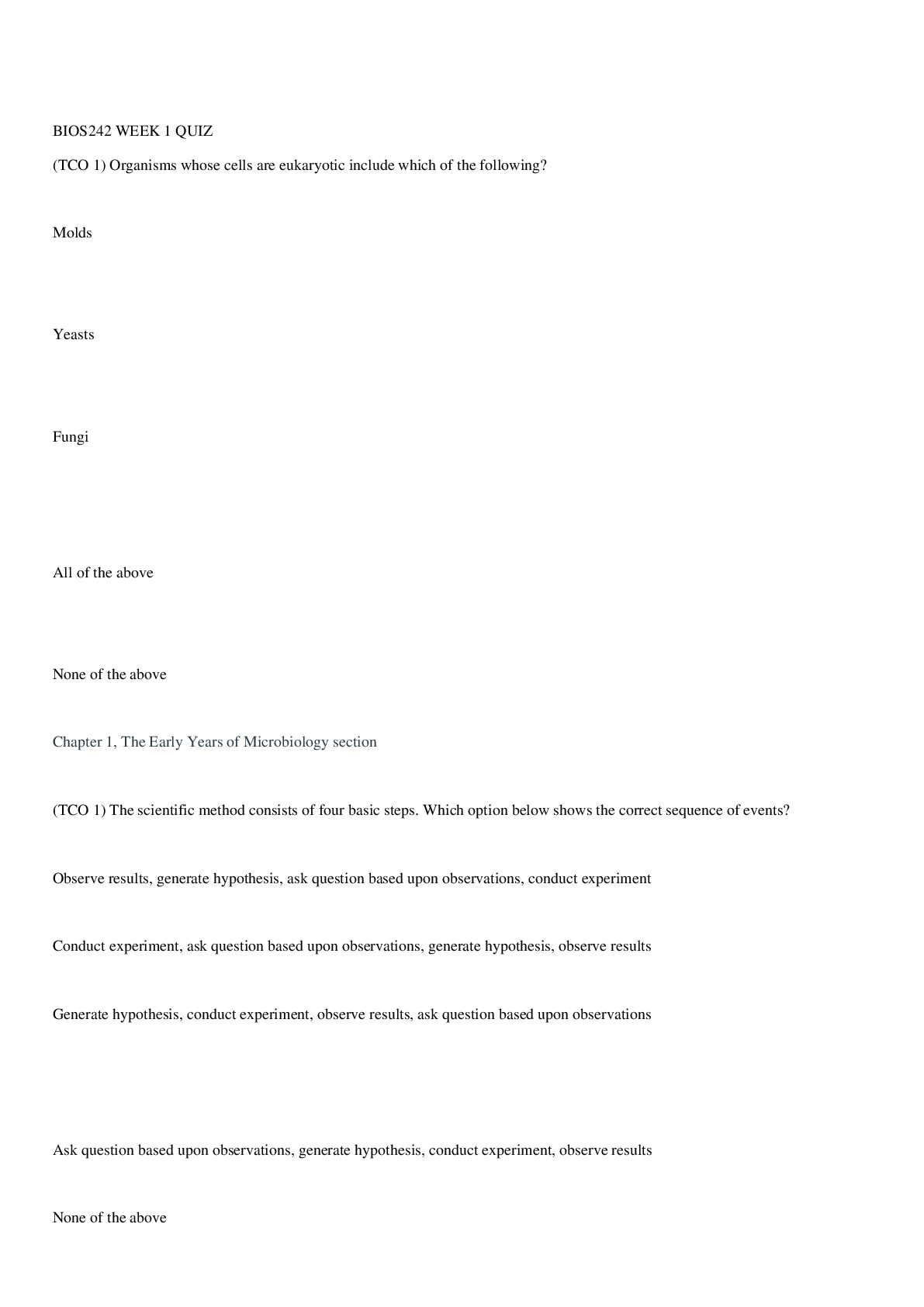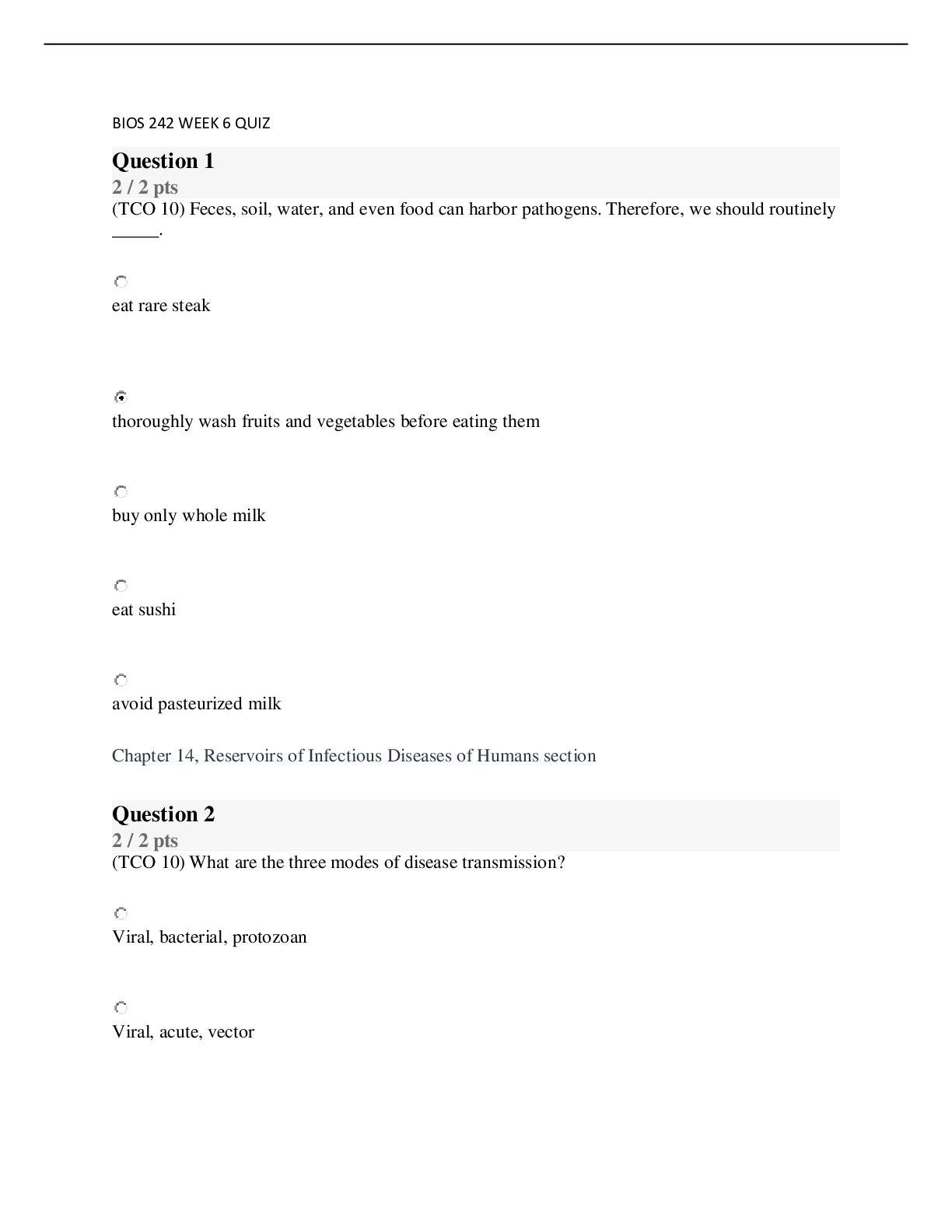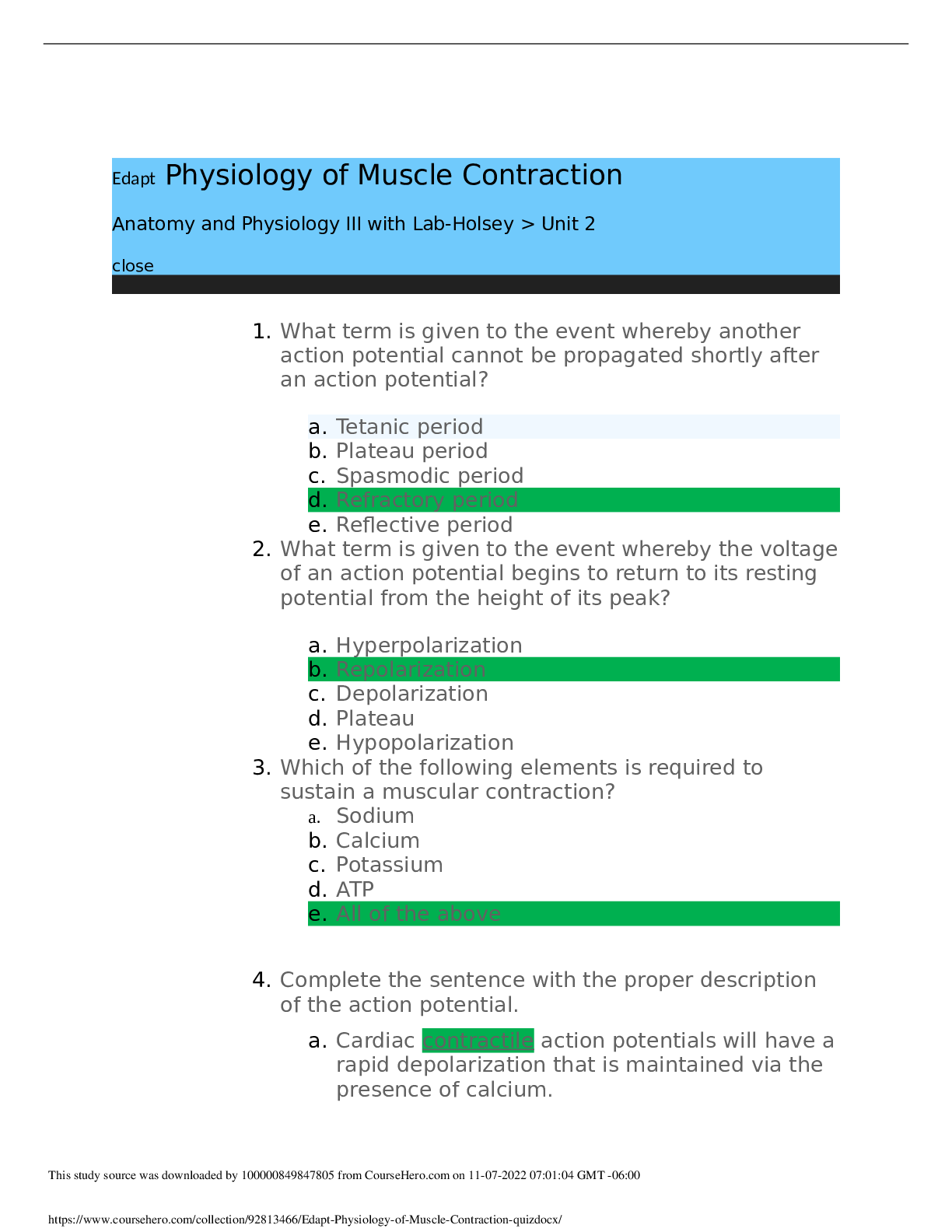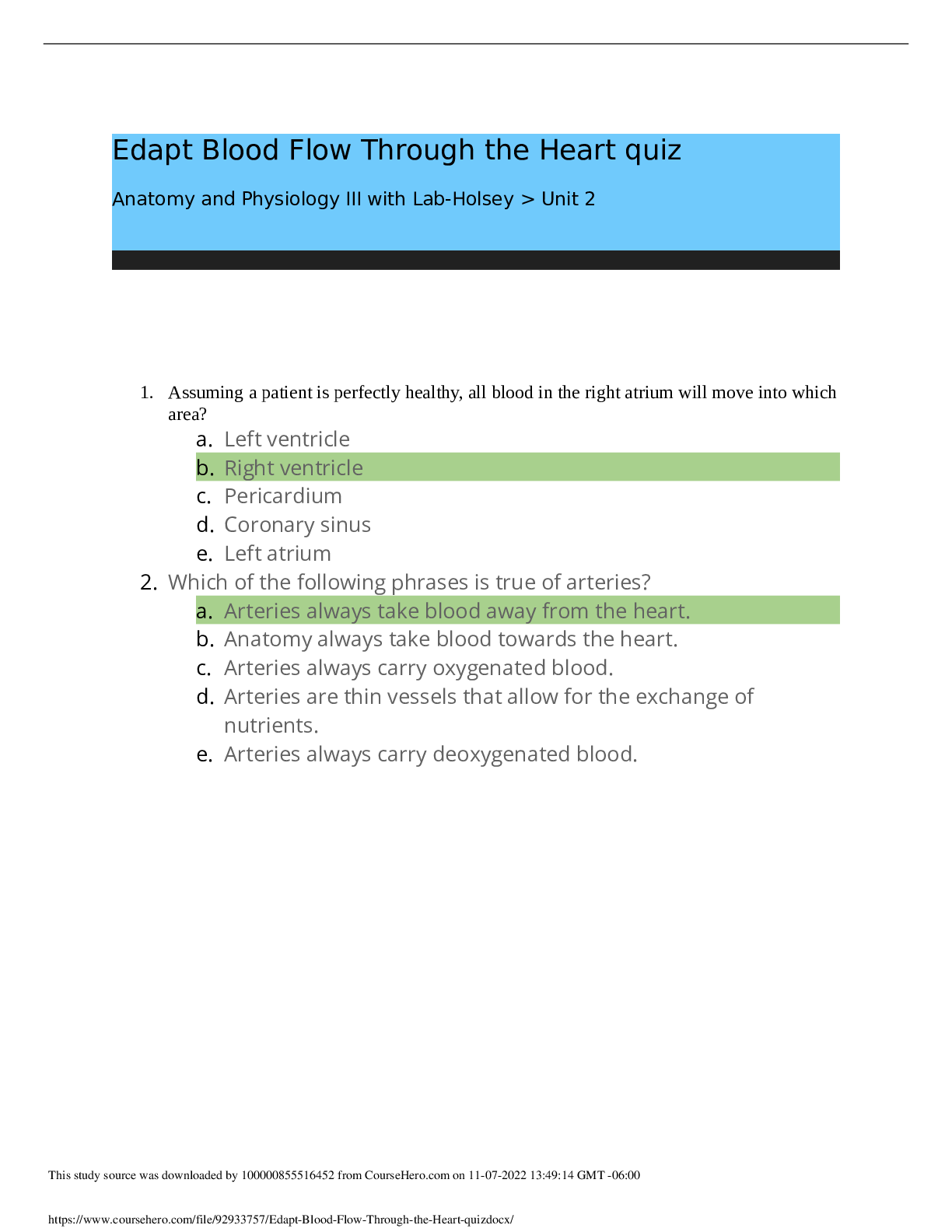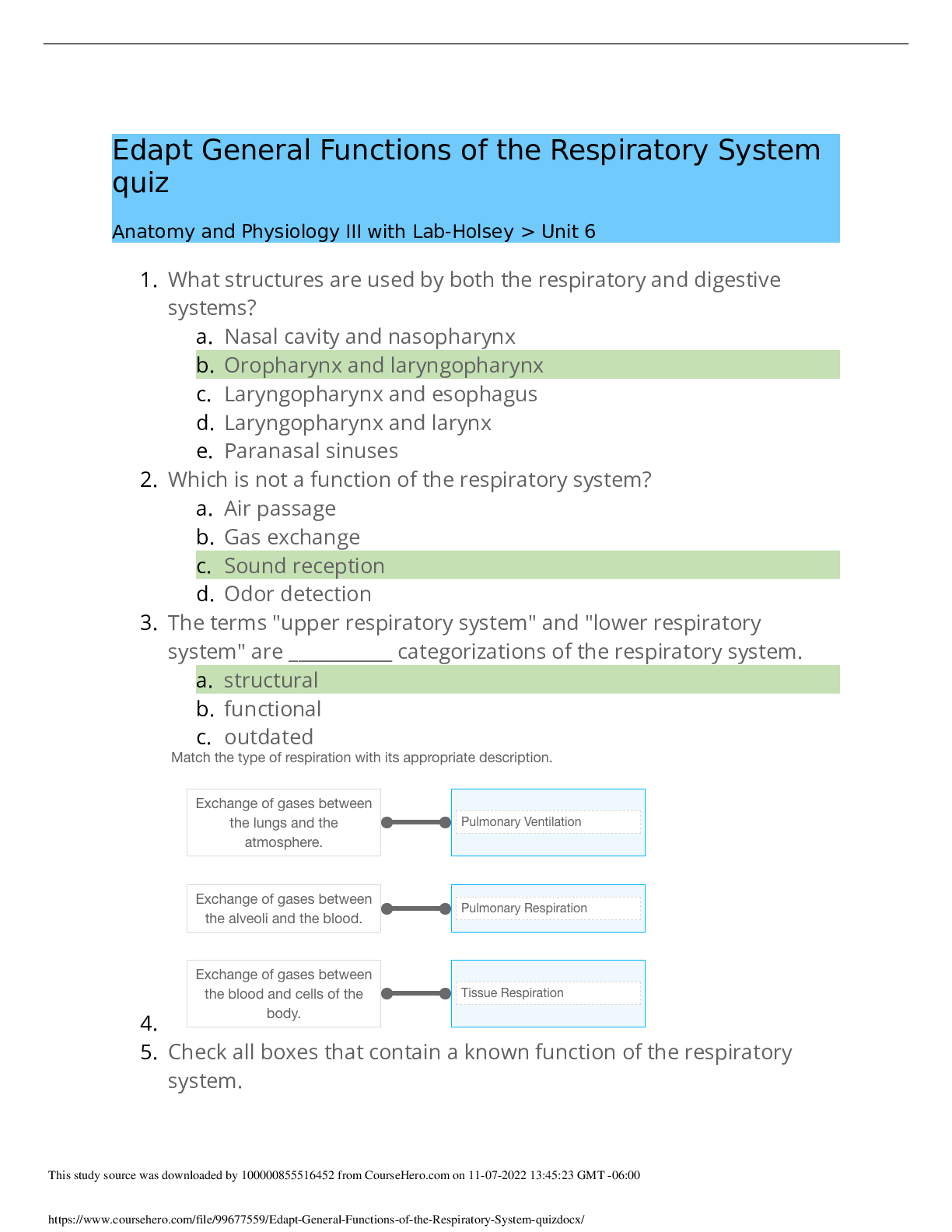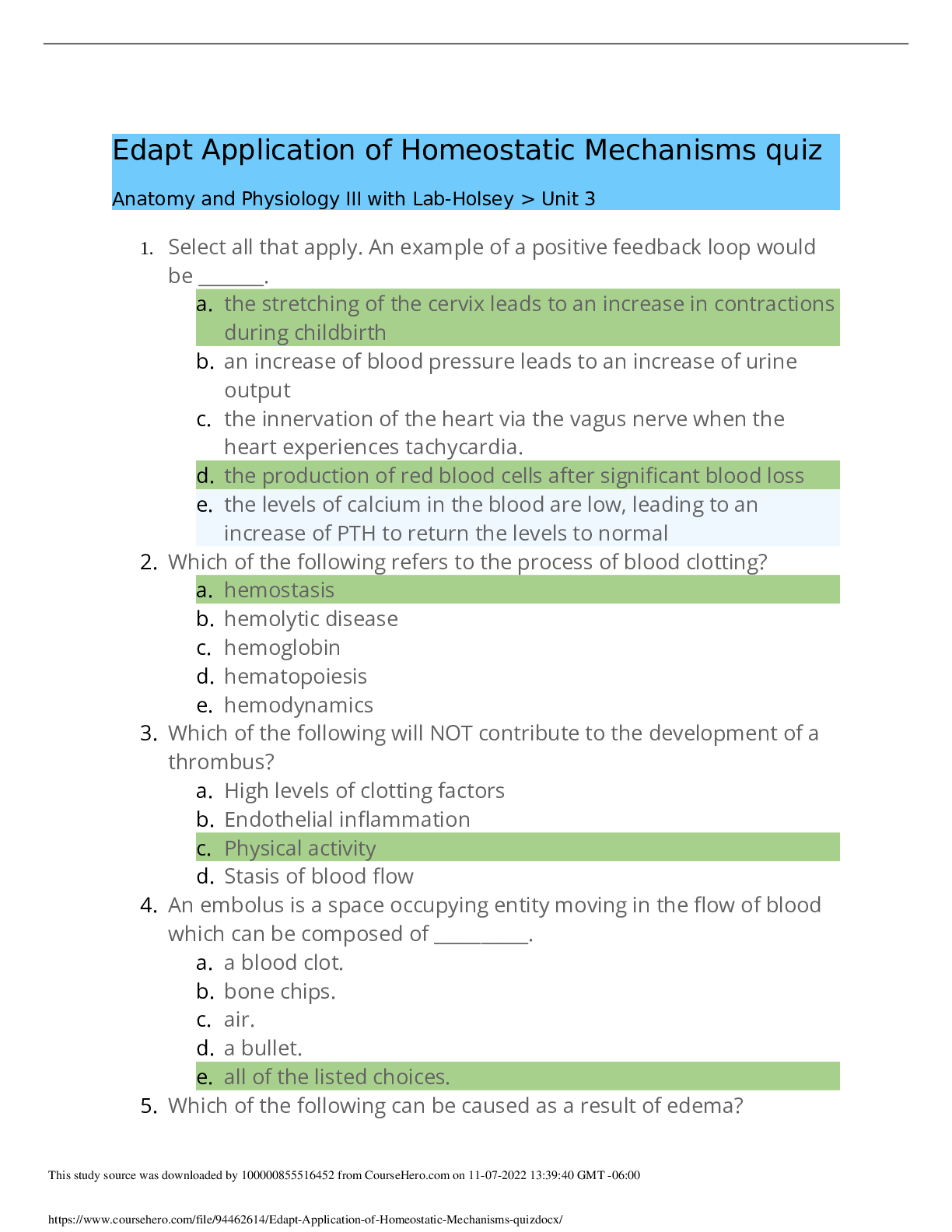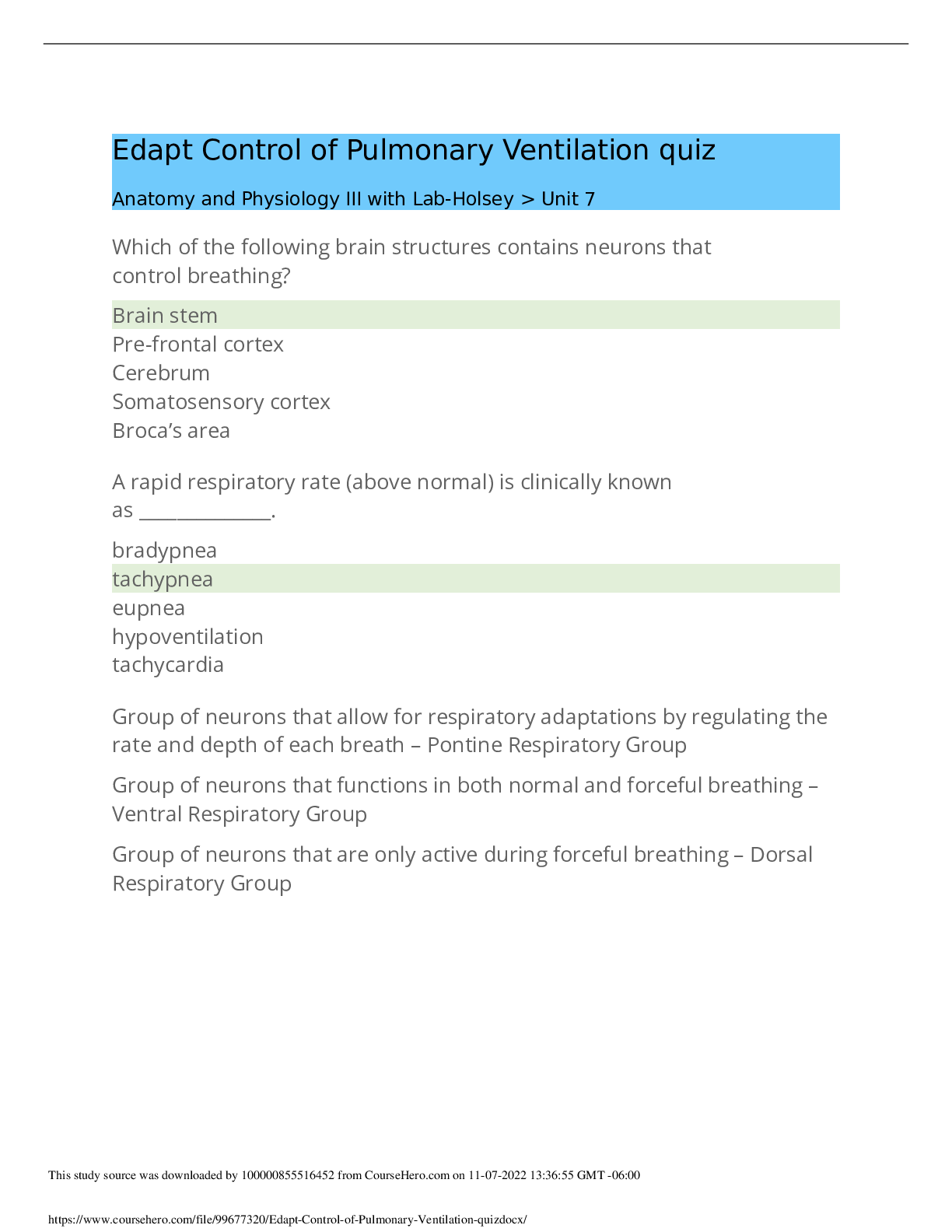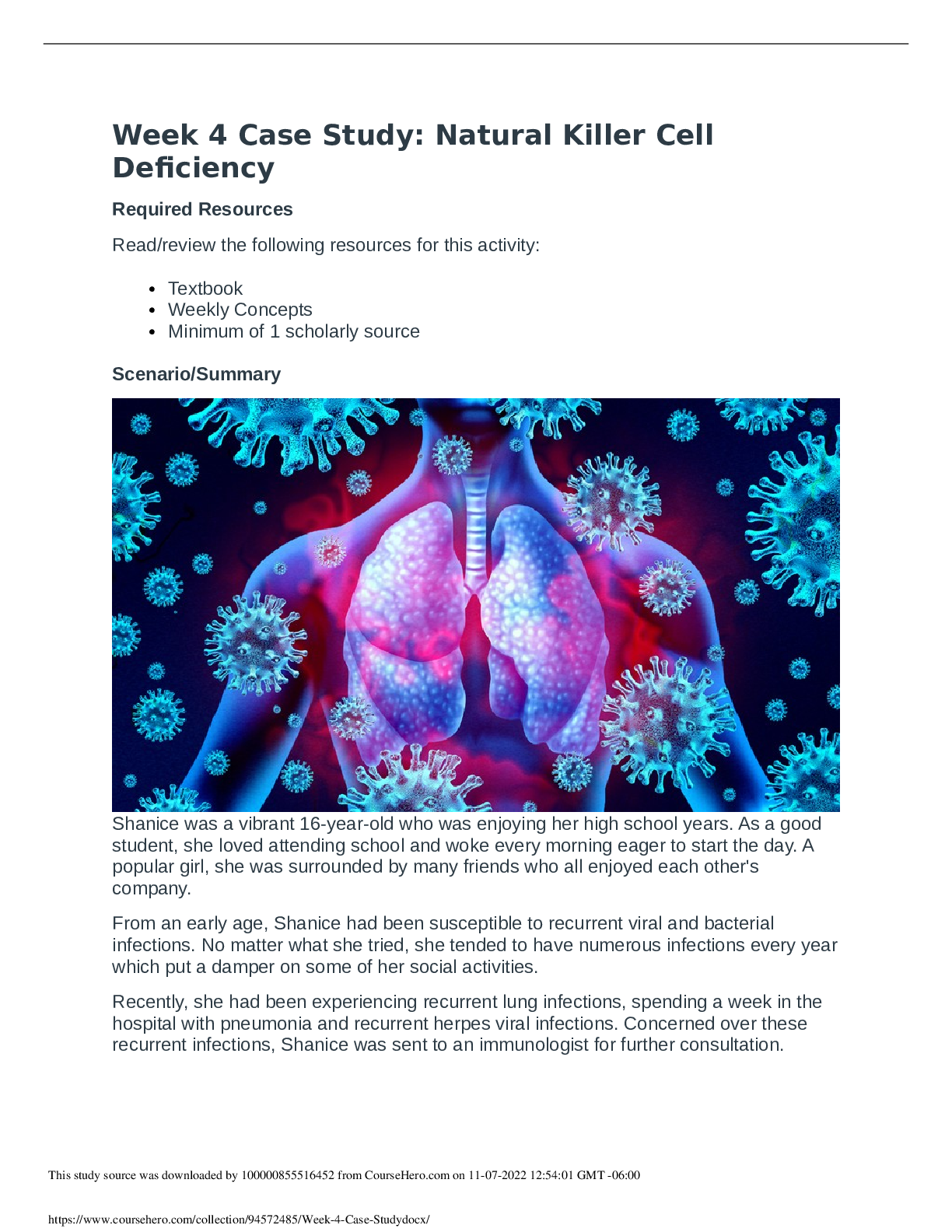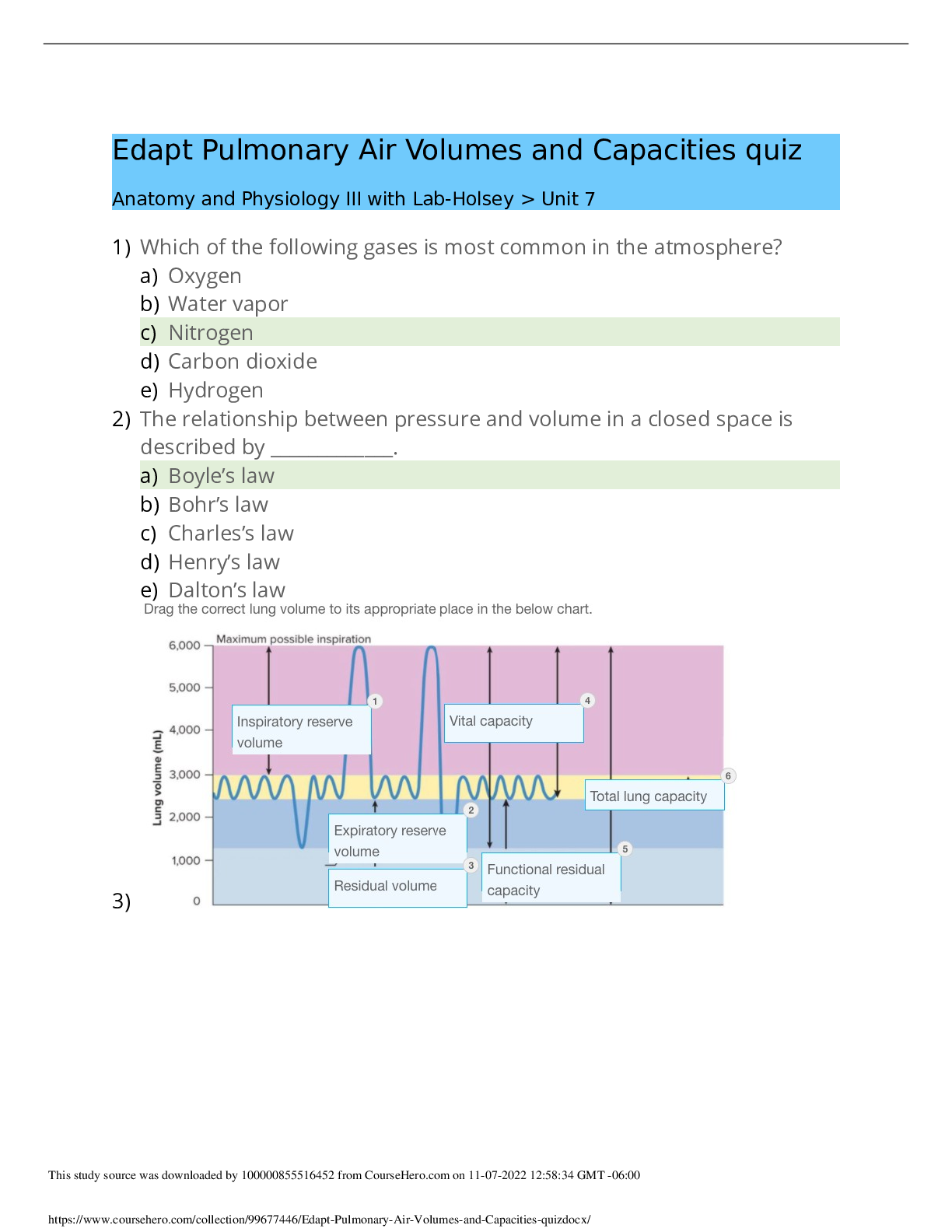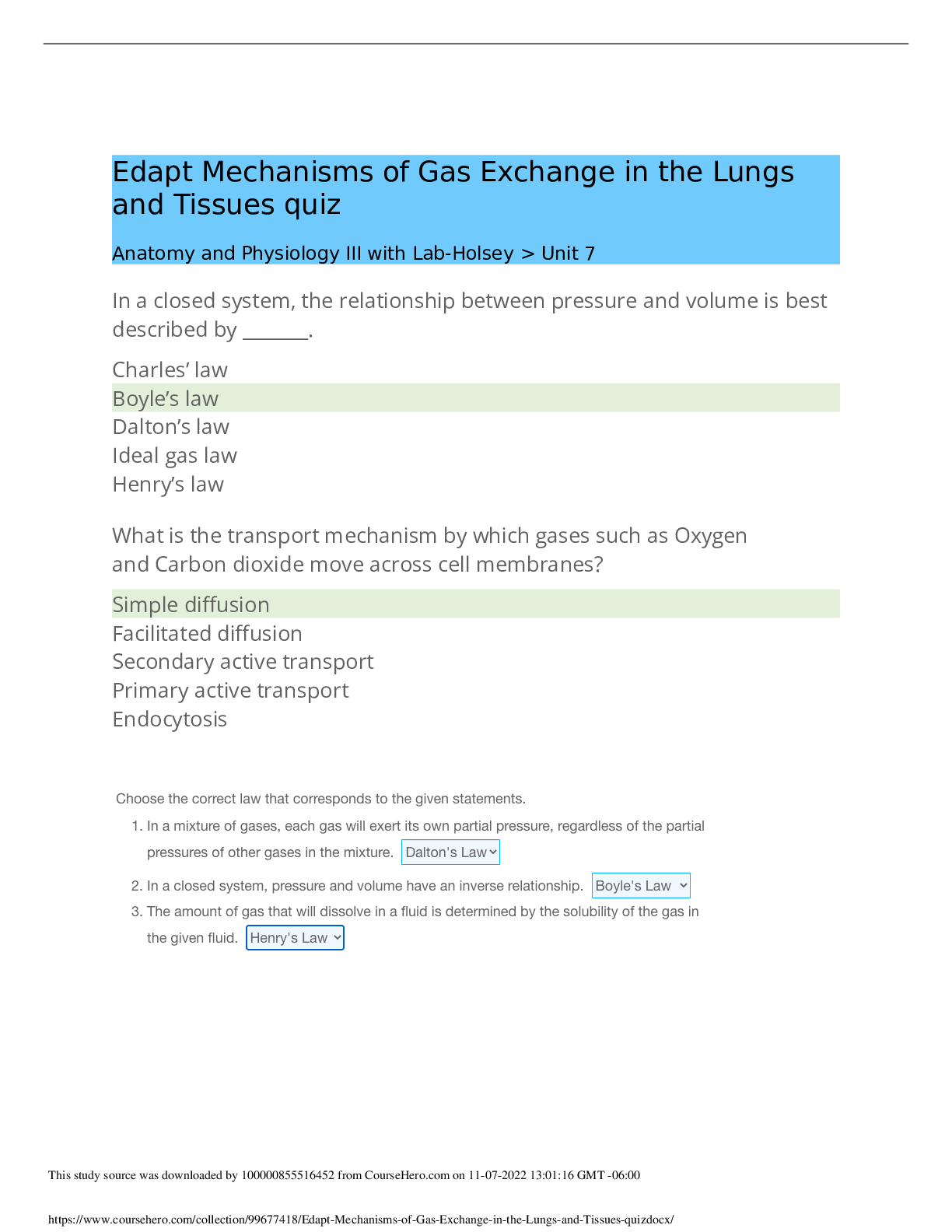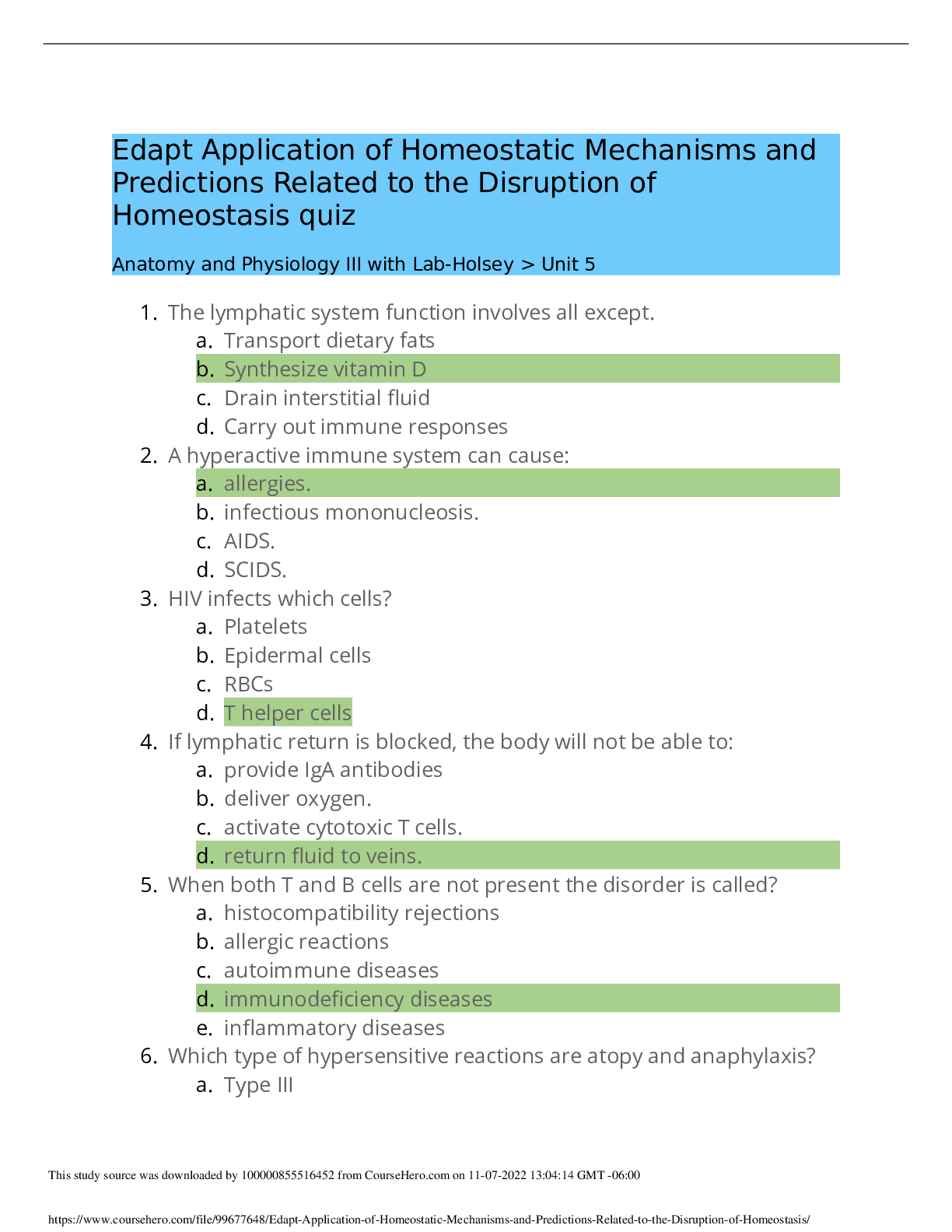Biology > QUESTIONS & ANSWERS > Chamberlain College of Nursing BIOS 255 DETERMINANTS OF BLOOD OXYGEN CONTENT Model 1: Oxygen Bin (All)
Chamberlain College of Nursing BIOS 255 DETERMINANTS OF BLOOD OXYGEN CONTENT Model 1: Oxygen Binding to a Single Hemoglobin Molecule. Hemoglobin and Blood Oxygen worksheet 40 points week 8
Document Content and Description Below
Chamberlain College of Nursing BIOS 255 DETERMINANTS OF BLOOD OXYGEN CONTENT Model 1: Oxygen Binding to a Single Hemoglobin Molecule. Hemoglobin and Blood Oxygen worksheet 40 points week 8 ... Saturated Hemoglobin Molecule QUESTIONS: 1. How many oxygen molecules are bound when a hemoglobin molecule is completely saturated? 2. How many oxygen molecules are bound when a hemoglobin molecule is 75% saturated? 3. Assuming you started with the molecule in Model 1, how many molecules of oxygen would need to be released in order for the hemoglobin to be 75% saturated? 4. The number of oxygen molecules bound to hemoglobin tends to fluctuate up and down. (Discuss the following questions with your group, and then write your answer) a) Where in the body does oxygen bind to hemoglobin? b) Where in the body are oxygen molecules released from hemoglobin? 5. Is it possible for one hemoglobin molecule to be 82% saturated? Why or why not? 6. How many molecules of oxygen are carried on 100 molecules of hemoglobin if the hemoglobin molecules are completely saturated? 7. After passing through a capillary bed, those 100 molecules of hemoglobin become 75% saturated with oxygen. How many molecules of oxygen were unloaded (released)? Model 2: Hemoglobin (Hb) Values and Their Effect on Oxygen Carrying Capacity Parameter Normal value QUESTIONS: 8. How many molecules of oxygen can one red blood cell carry? 9. Is it possible for the total hemoglobin inside a red blood cell to be 82% saturated? Explain your answer. 10. Set up a mathematical equation that illustrates how to calculate the number of oxygen molecules that could be carried in 1 dL of blood when it is fully saturated with oxygen (you do not have to solve your calculation): 11. Calculate the amount (in mL) of oxygen that could be carried in 1 dL of blood when the hemoglobin is 100% saturated: 12. Calculate the amount (in mL) of oxygen carried in 1 dL of blood when the hemoglobin is 50% saturated: Model 3: Oxyhemoglobin Dissociation Curve Oxyhemoglobin Dissociation Curve QUESTIONS: 13. What is the label on the X-axis? 14. What are the units specified on the X-axis? 15. What is the label on the Y-axis? 16. What are the units specified on the Y-axis? 17. As partial pressure of oxygen (PO2) increases, what happens to hemoglobin saturation? 18. At PO2 of 100 mm Hg, what is the hemoglobin saturation? 19. At PO2 of 20 mm Hg, what is the hemoglobin saturation? 20. Key gas exchange locations: a) What is meant by the “distal end of a capillary”? b) Alveolar capillaries: • Where in the body are alveolar capillaries located? • Would hemoglobin be loading or unloading oxygen in these capillaries? • Using the figure above, what is the saturation (%) of blood at the distal end of an alveolar capillary in a normal person? c) Systemic capillaries • Where might you find the distal end of a metabolically active (working) capillary? • Would hemoglobin be loading or unloading in these capillaries? • What is the saturation (%) at the distal end of this type of capillary? 21. Complete the following table. Assume a “normal” individual with a Hb concentration of 15 g/dL. There is space for your calculations after the table. Show your work! Vessel PO2 (mmHg) Hb Saturation (%) Oxygen content (mL/dL) 22. Using the results of your calculations in Question #21, complete the following table. (Assume all references to capillaries refer to the distal end of the capillary) Relationship Difference (number) 23. When a person exercises, what happens to the oxygen saturation of hemoglobin in capillaries leaving muscle tissue compared to a resting capillary? Discuss with your group and write one answer. 24. Does a change in PO2 always correspond to a proportional (linear, or 1 to 1) change in oxygen content? Explain why or why not: Extension Questions: 25. There is an oxygen bar in town where you can pay to breathe air with higher than normal oxygen content. The owners claim it will improve your alertness and ability to function. Using data from the graph in Model 2, discuss with your group whether you think this statement is true or not. Explain your answer in complete sentences below: 26. A person with anemia has a decreased concentration of hemoglobin in the blood. a) Would this affect the person’s oxyhemoglobin dissociation curve? Explain: b) Would it affect their blood oxygen content? Explain: 27. Describe a specific situation (like a disease, impairment, environmental change, etc.) or circulatory location that could be represented by point 3 in Model 3: [Show More]
Last updated: 1 year ago
Preview 1 out of 9 pages
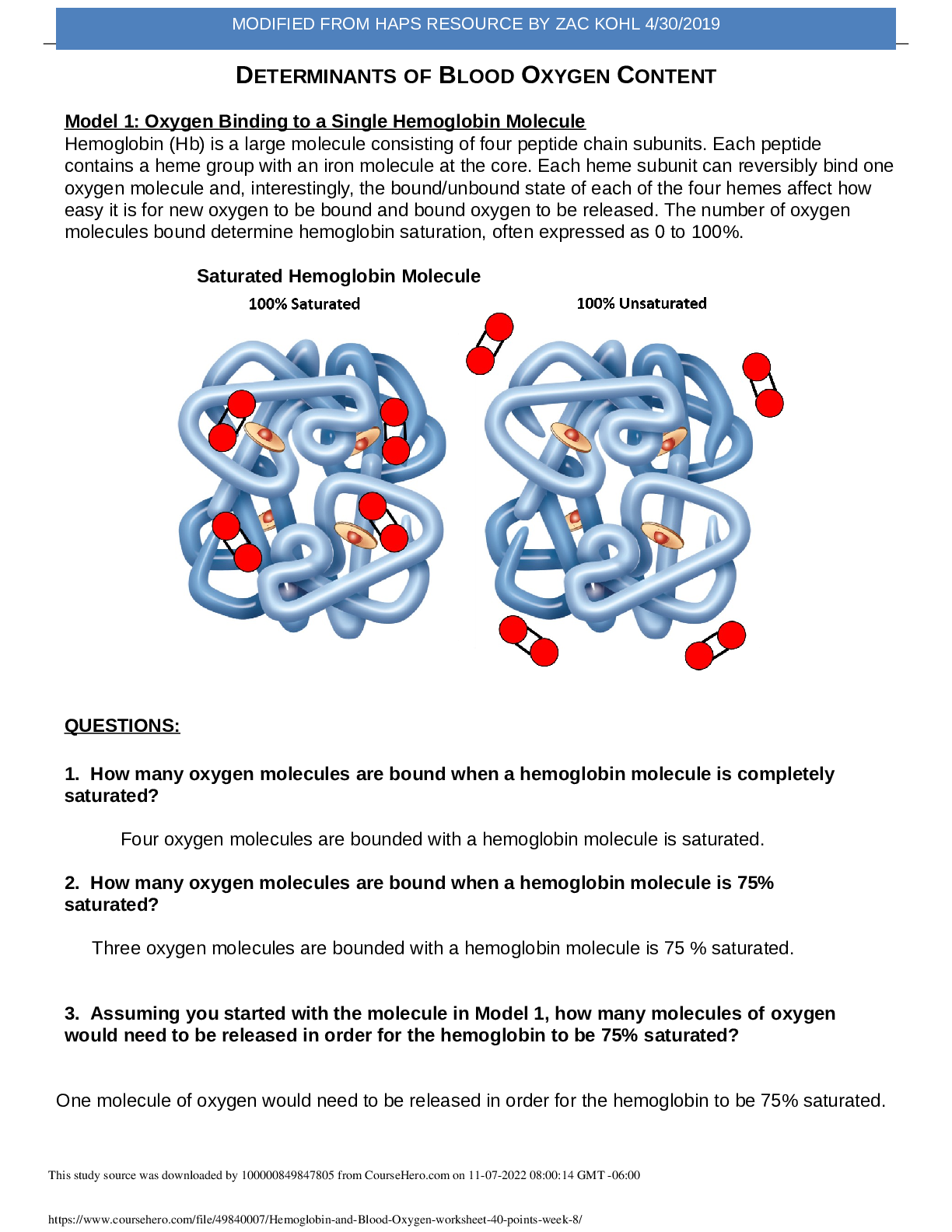
Reviews( 0 )
Document information
Connected school, study & course
About the document
Uploaded On
Nov 07, 2022
Number of pages
9
Written in
Additional information
This document has been written for:
Uploaded
Nov 07, 2022
Downloads
0
Views
150

